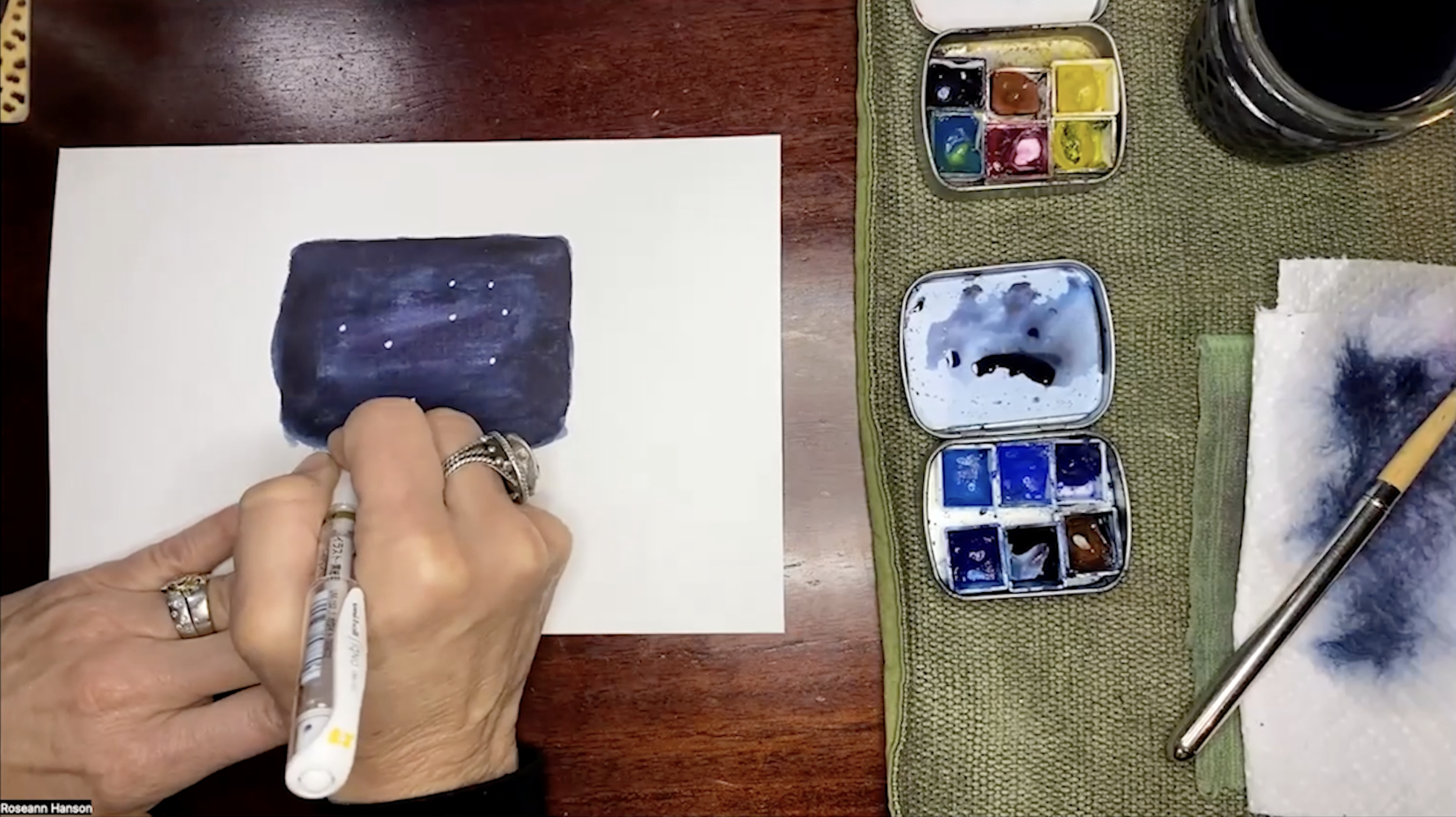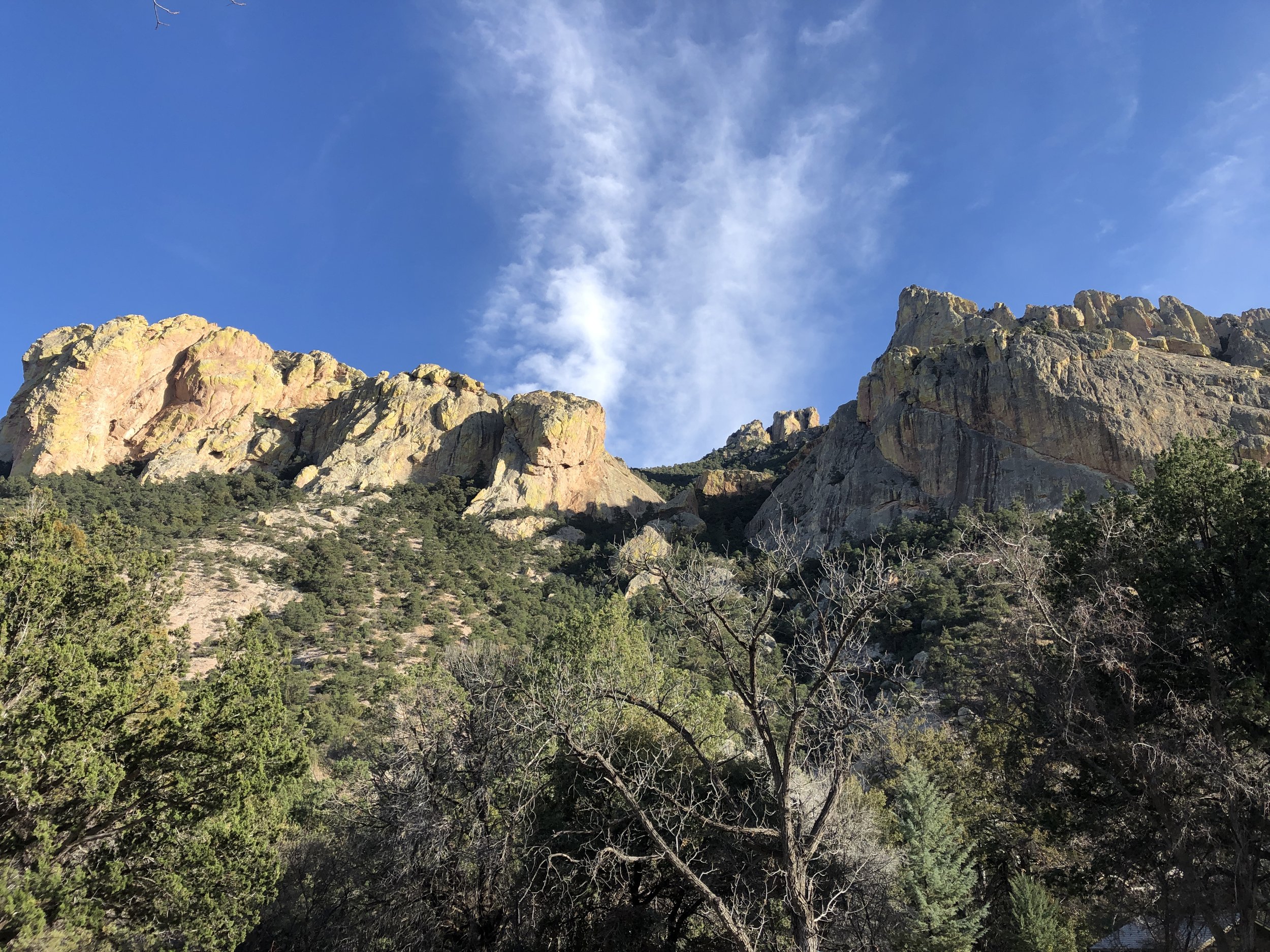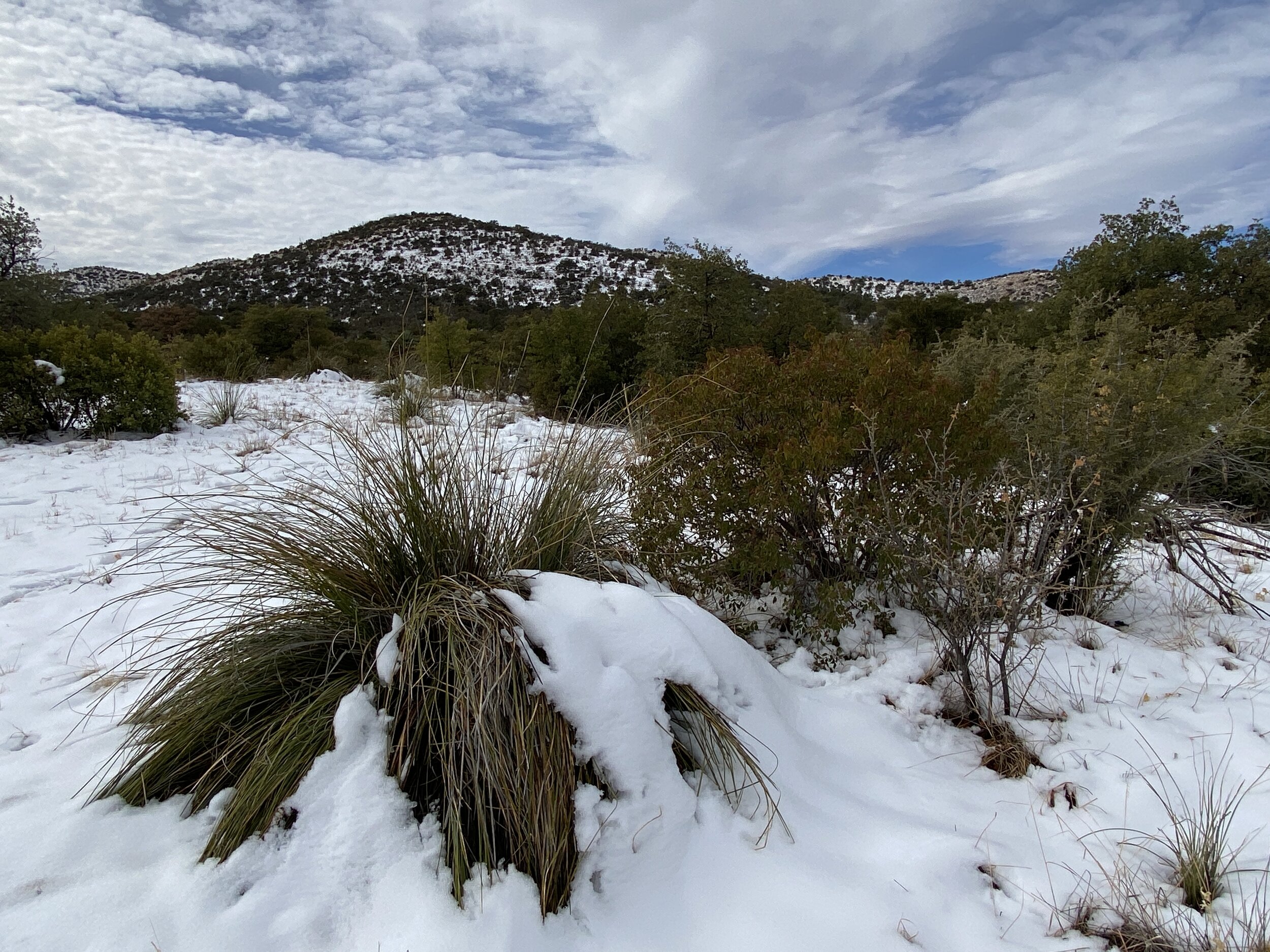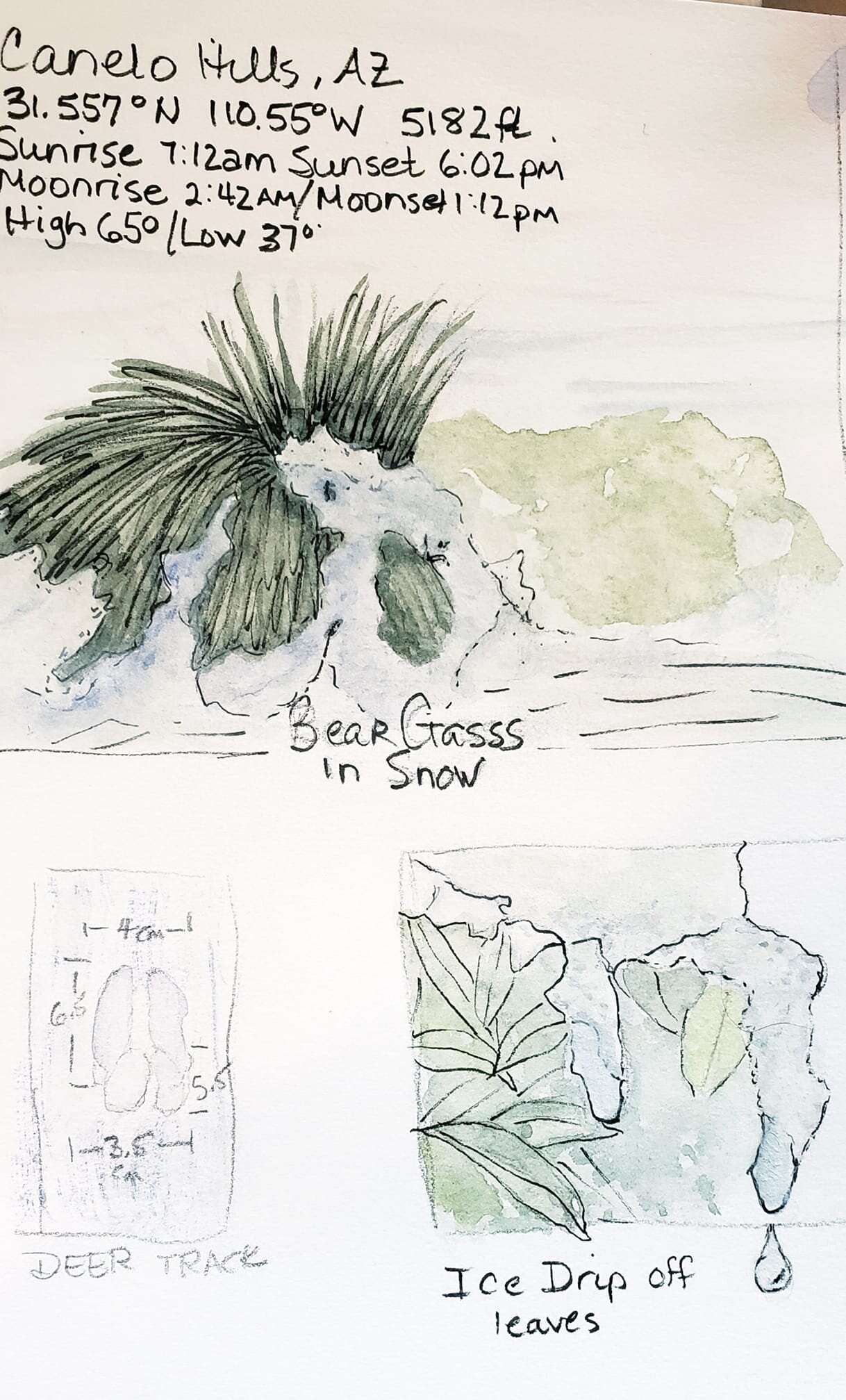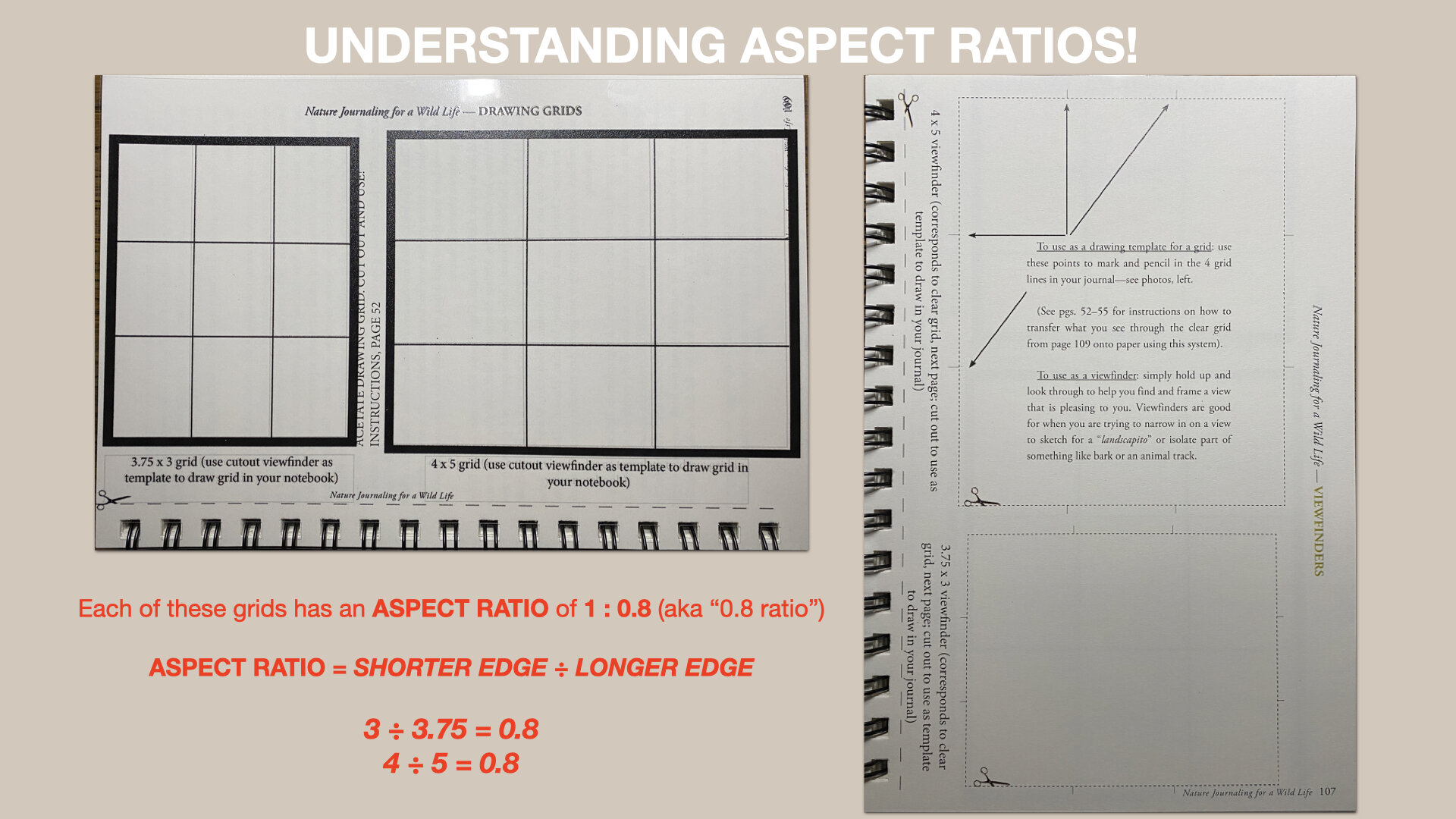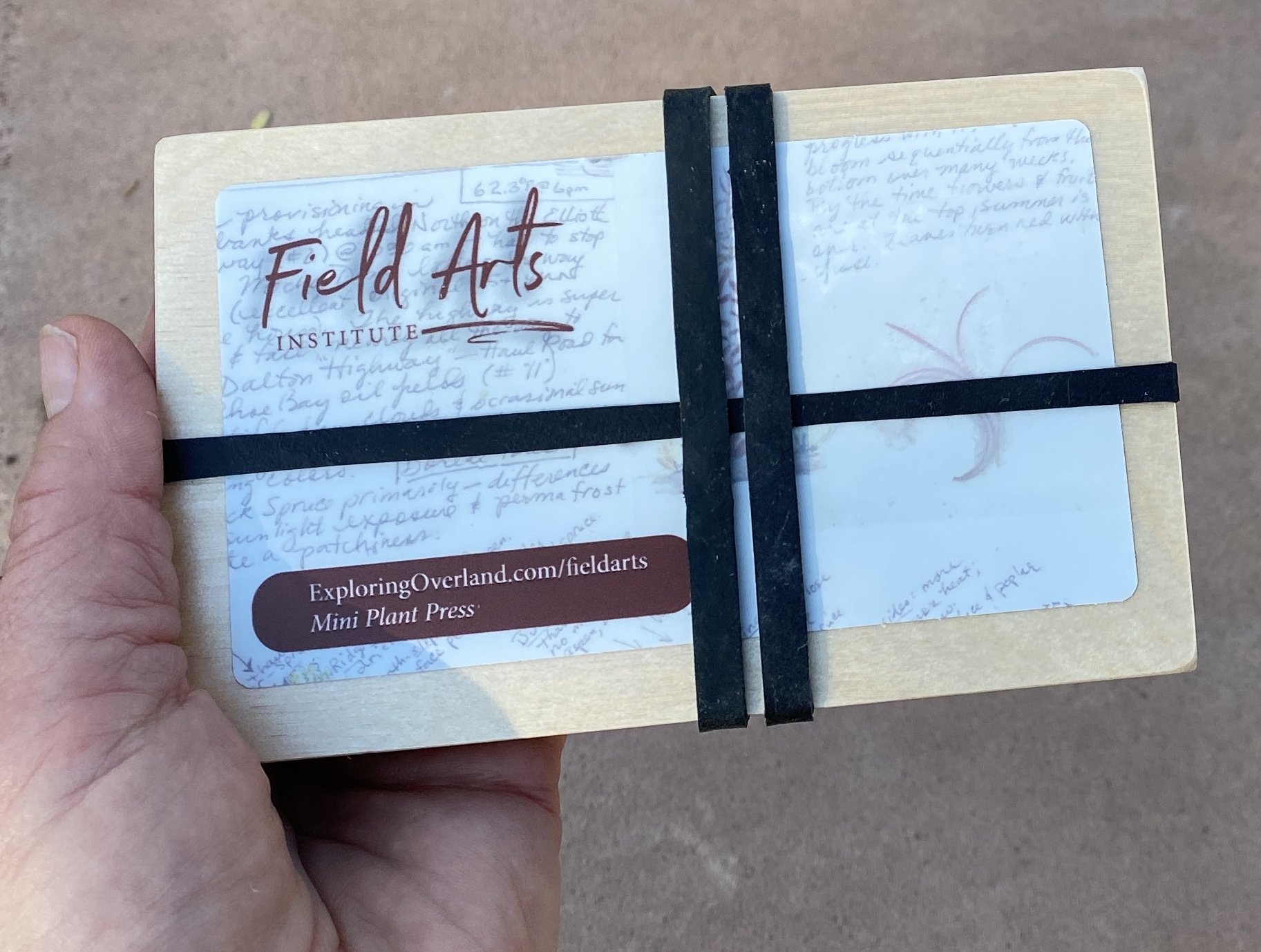Field Arts Workshop: Creative Night Skies (Full Class)
How do you journal night skies? It's always been a love-hate thing for me—I love tracking the stars and planets and finding constellations, but depicting them in journals can be challenging!
In this free online workshop, I demonstrate four different approaches:
Pre-painted watercolor skies on which you can add sky components live or after a sky-viewing telescope session (a technique inspired by Alaska artist Kristin Link);
Making a cutaway peek-a-boo window showing day-and-night;
Using Sharpies and white, silver, or other metallic pens and pencils; and
Using black paper and white, silver, or other metallic pens, pencils, and paint.
WHAT YOU WILL NEED:
Journal with or sheets of watercolor paper;
Paint colors: Indigo, Pthalo Blue (Green Shade), Quinacridone Rose or similar, Burnt Sienna (mine are Daniel Smith but any brand will do);
Hair dryer;
White gel pen (the best is Uniball Signo;
White and red colored pencils;
For fun if you have them: metallic paints or pens and pencils;
Black Sharpie;
Black paper.
Here is a link to a static post with photos and more instructions:
https://www.exploringoverland.com/constantapprentice/2023/4/10/journaling-night-skies
Attendees’ Pages

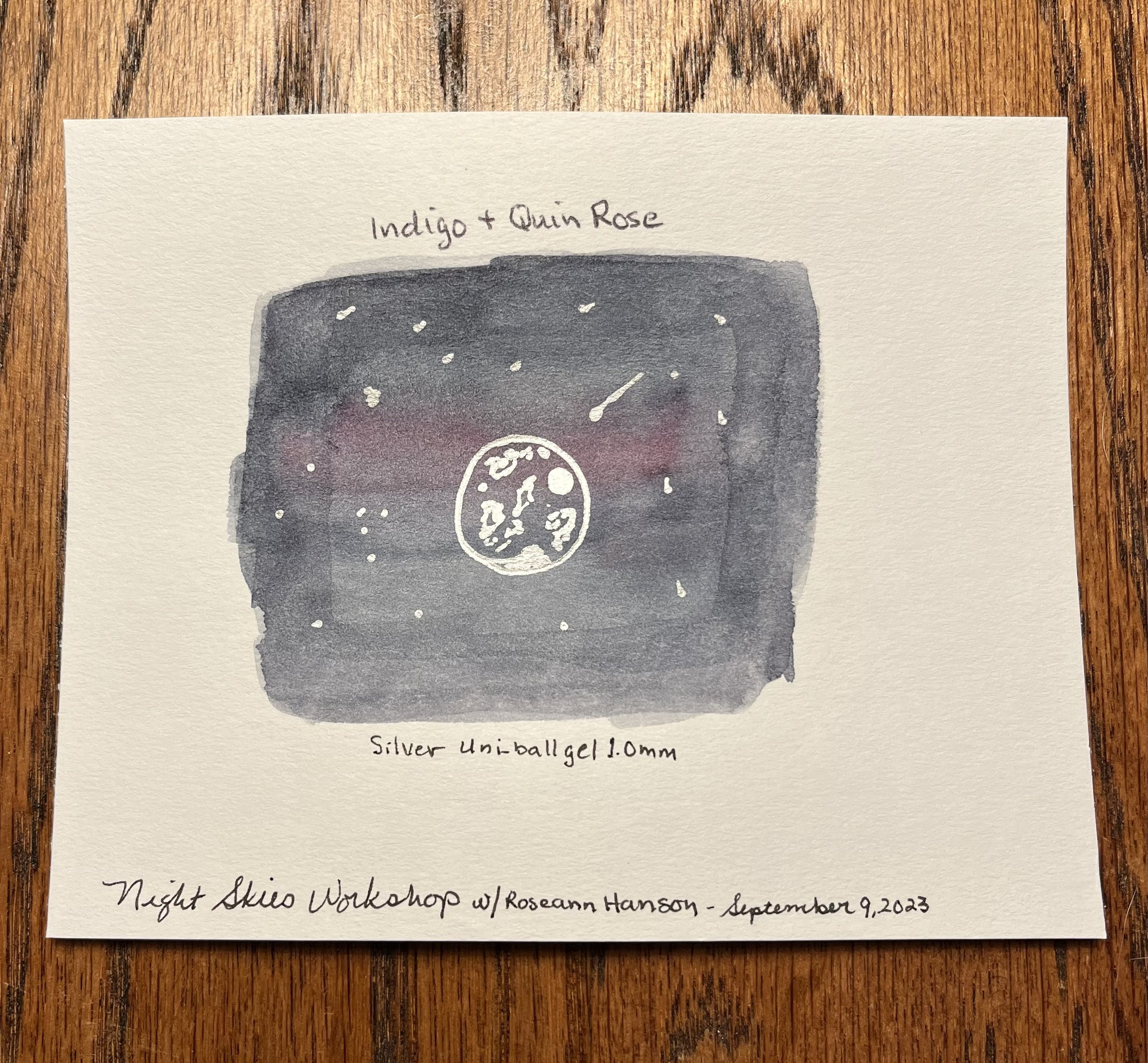
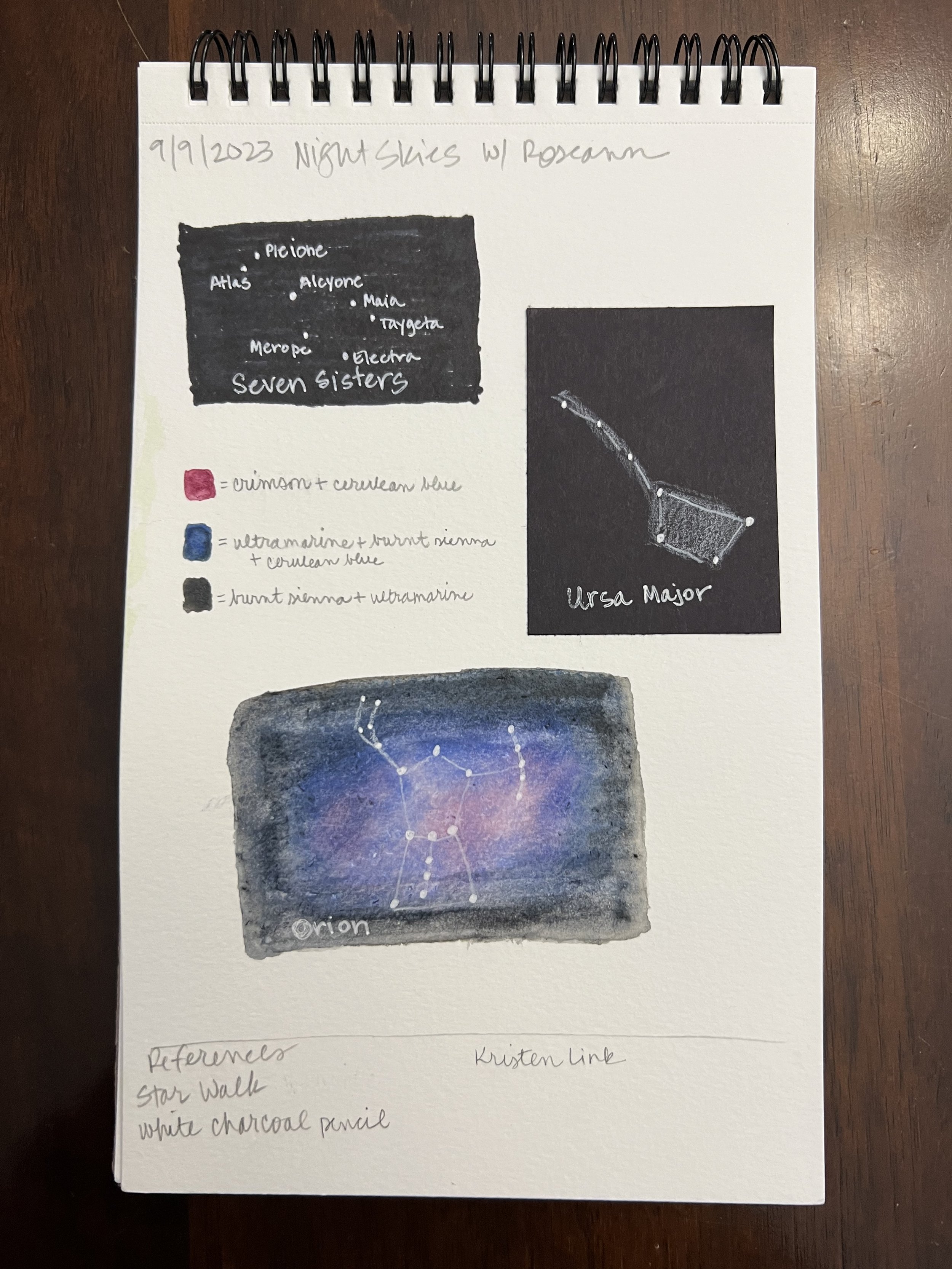
Field Arts Workshop: Ancient Ochres
Human use of pigments to express ourselves may be—literally—a watershed moment in evolutionary time. Perhaps among the first to be used were iron oxides (ochres) such as at France’s famous Lascaux. Archaeologist Tammy Hodgskiss wrote: “People may say ochre is the earliest form of art and symbolism, but there’s more to it. Ochre shows how our brains were developing, and that we were using our environment. It bridges the divide between art and science.”
In this deep dive into the science of artistic pigments and look at our earliest history as artists, we will also learn to create beautiful images in our field notebooks and nature journals using natural earth pigments such as ochres (yellow, red, purple), manganese, lapis lazuli, graphite, and more.
Length: 2 hours
Resources from the Workshop
CHAT transcript — click > HERE <
Click to initiate download of a PDF of the workshop presentation: https://www.dropbox.com/s/qk9sp3baj3v8u7s/Ancient%20Ochres%2011-13-2021.pdf?dl=0
Pigment and natural paint sources:
Greenleaf & Blueberry – handmade in Colorado by Jess Greenleaf and her team, amazing quality and natural pigments
Clearwell Caves (you will need to call; scroll to the bottom of this page for pricing)
Natural Earth Pigments – great pigments and mulling equipment
Cornelissen & Sons – classic London colourists for artists for several hundred years
Kremer Pigments – fantastic source with full disclosure of pigment origins; lots to choose from in earth / iron oxides https://shop.kremerpigments.com/us/shop/pigments/
For the Love of Soil – women-owned who are also soil scientists
Beam Paints – indigenous women-owned; I don’t have personal experience with the quality of these paints
Natural pigment demo landscapito of Cave Creek Canyon in the Chiricahua Mts., southeast Arizona; pigments from top to bottom: Chiricahua Red Ochre (wildcrafted by Roseann); Yellow Ochre (Greenleaf & Blueberry); Sleeping Beauty Turquoise (Daniel Smith); Lapis Lazuli (made by Roseann from pigment from Cornellisen & Sons, London); Point Reyes Quaternary Dune (wildcrafted by Roseann).
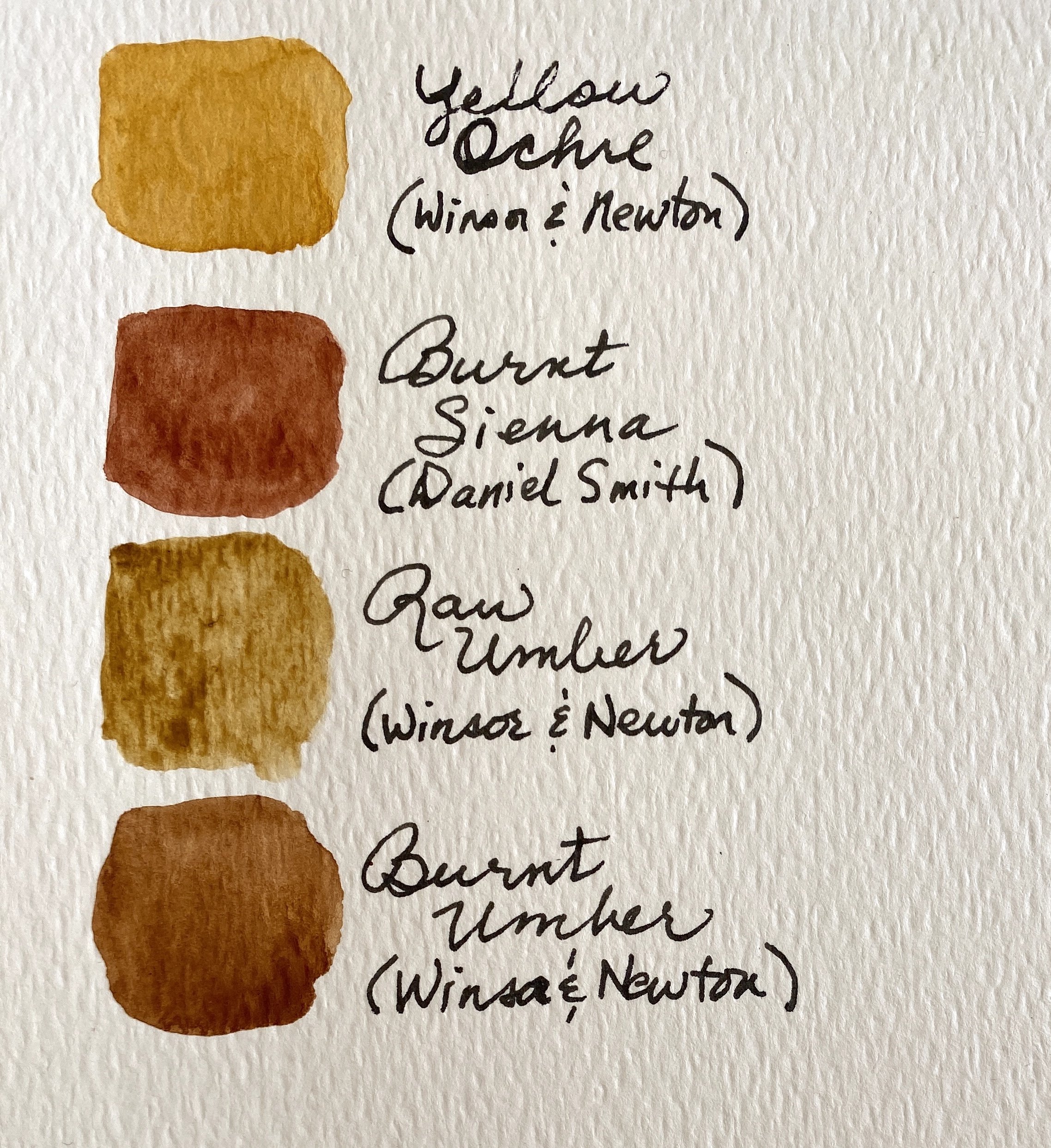
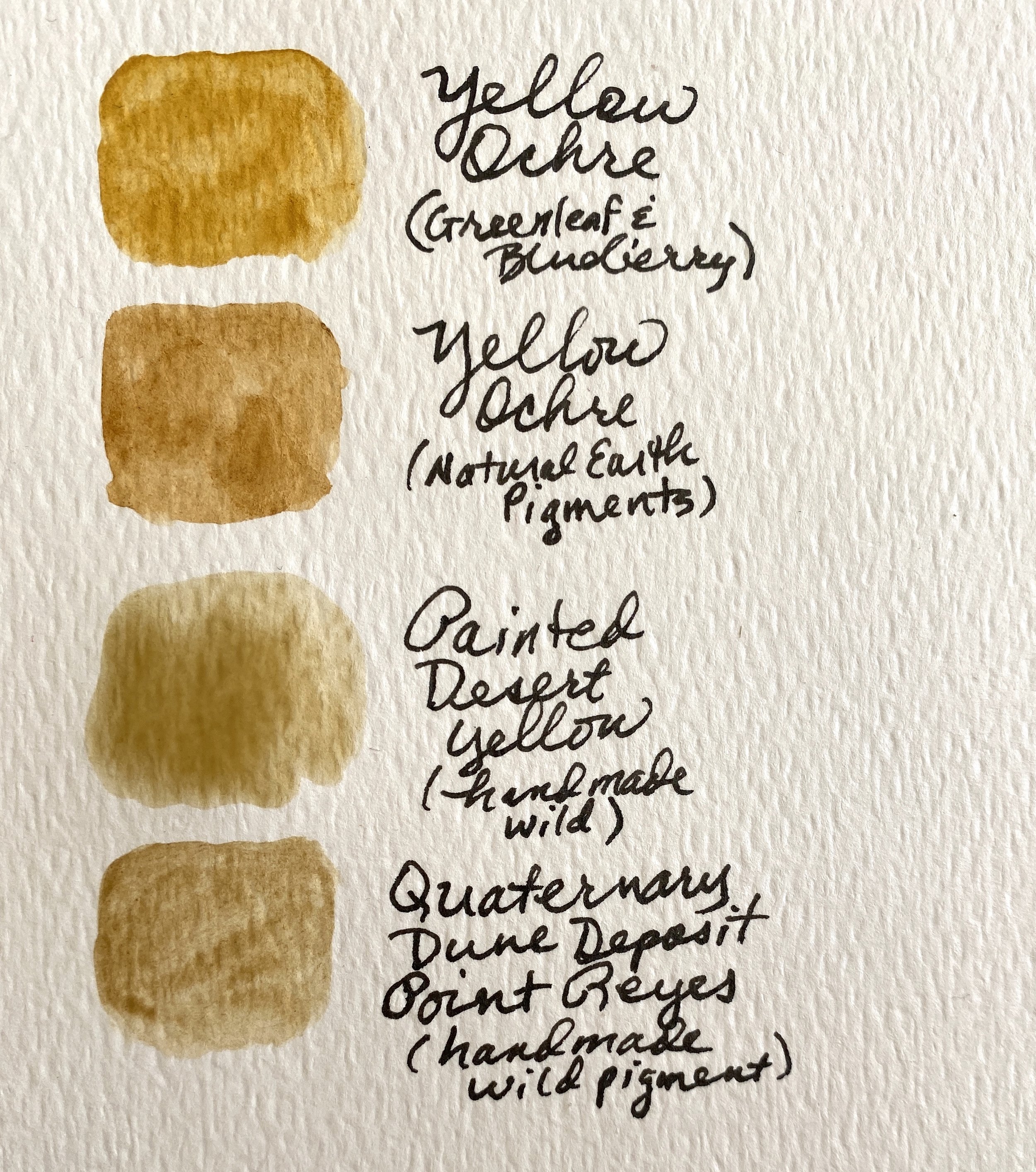
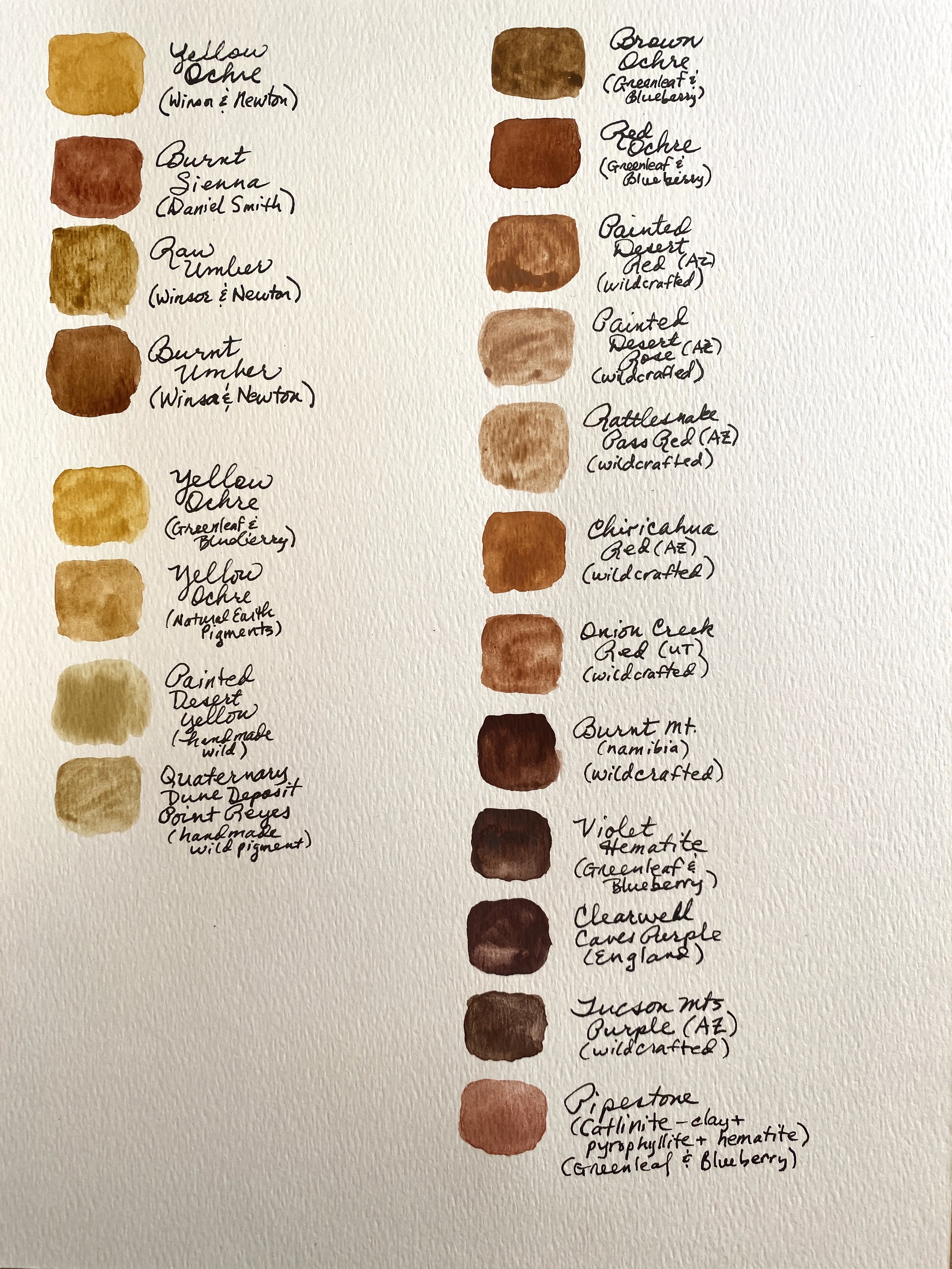


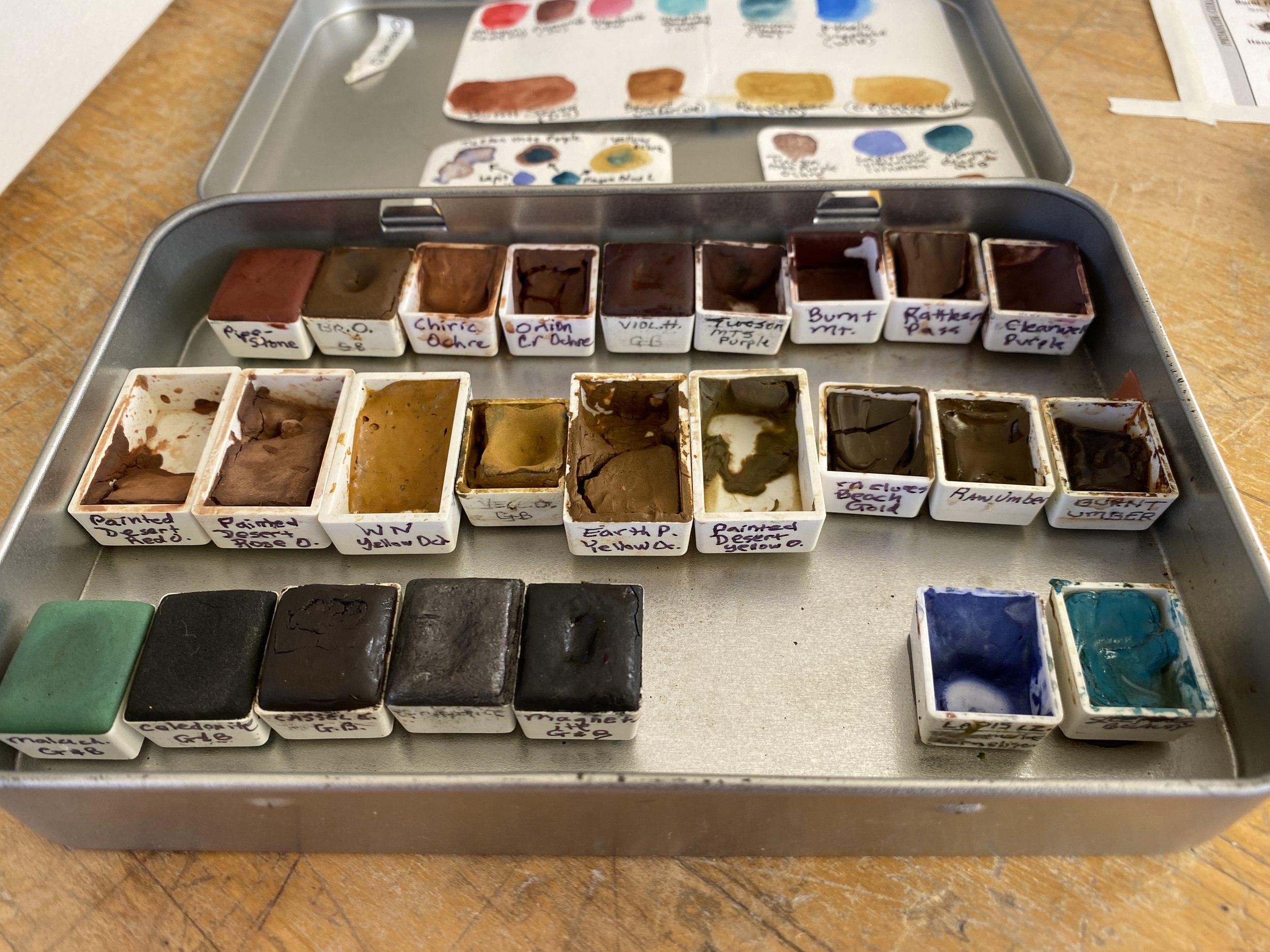
Images from Workshop Participants
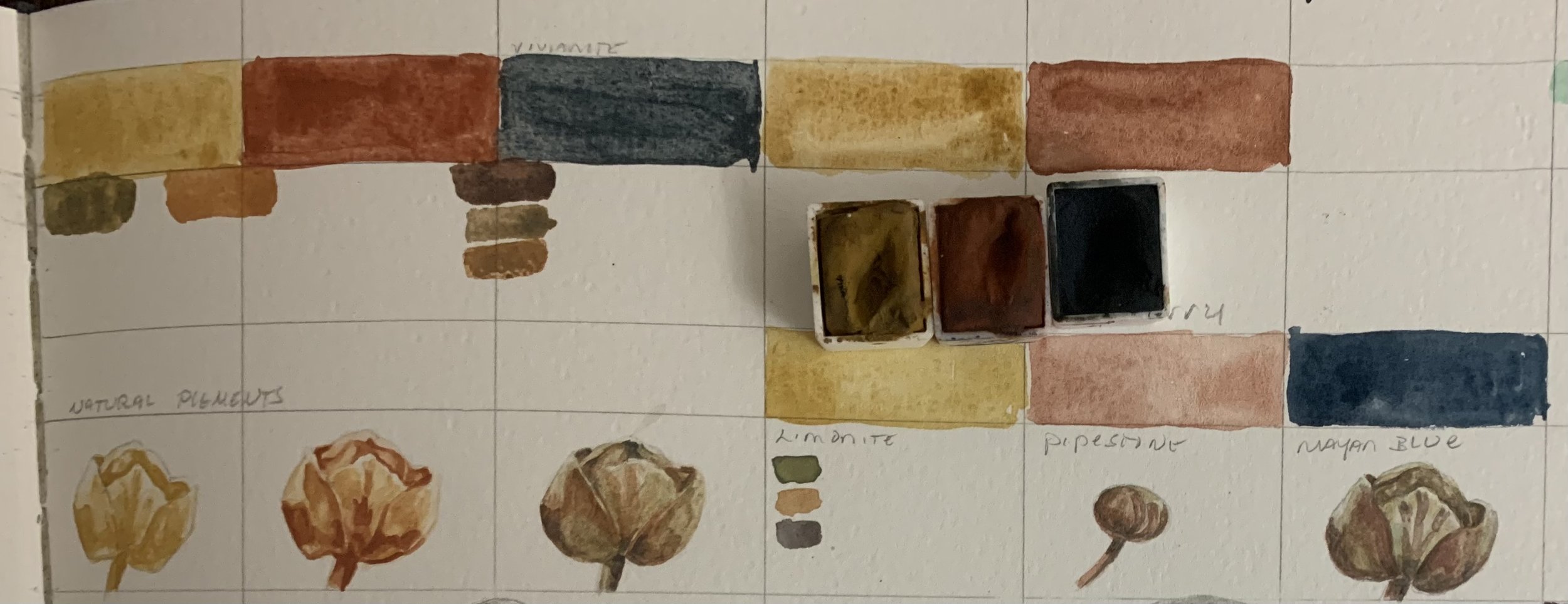
Field Arts Workshop: Elegant Ink for Field Notebooks
Join me for a celebration of the art of elegant ink in our sketchbooks. While I do love color in my journal, I also love the beauty of well-wrought pen sketches.
We’ll cover types of pens and inks (from ballpoint to fountain pens, including the pluses and minuses of the types); practice mark-making and values; and work on a couple of different types of sketches using one image to create each, so we can see how different styles of linework each produce a different “feel” on your pages.
Length: 2 hours
Images at right: Creating various “palettes” for your marks is a great exercise and very useful to keep tucked in a pocket of your journal for reference. The different types of stroke, texture, and tone are like words in a language or paint colors in a palette: you choose each for a different effect, feel, tone, or emphasis.
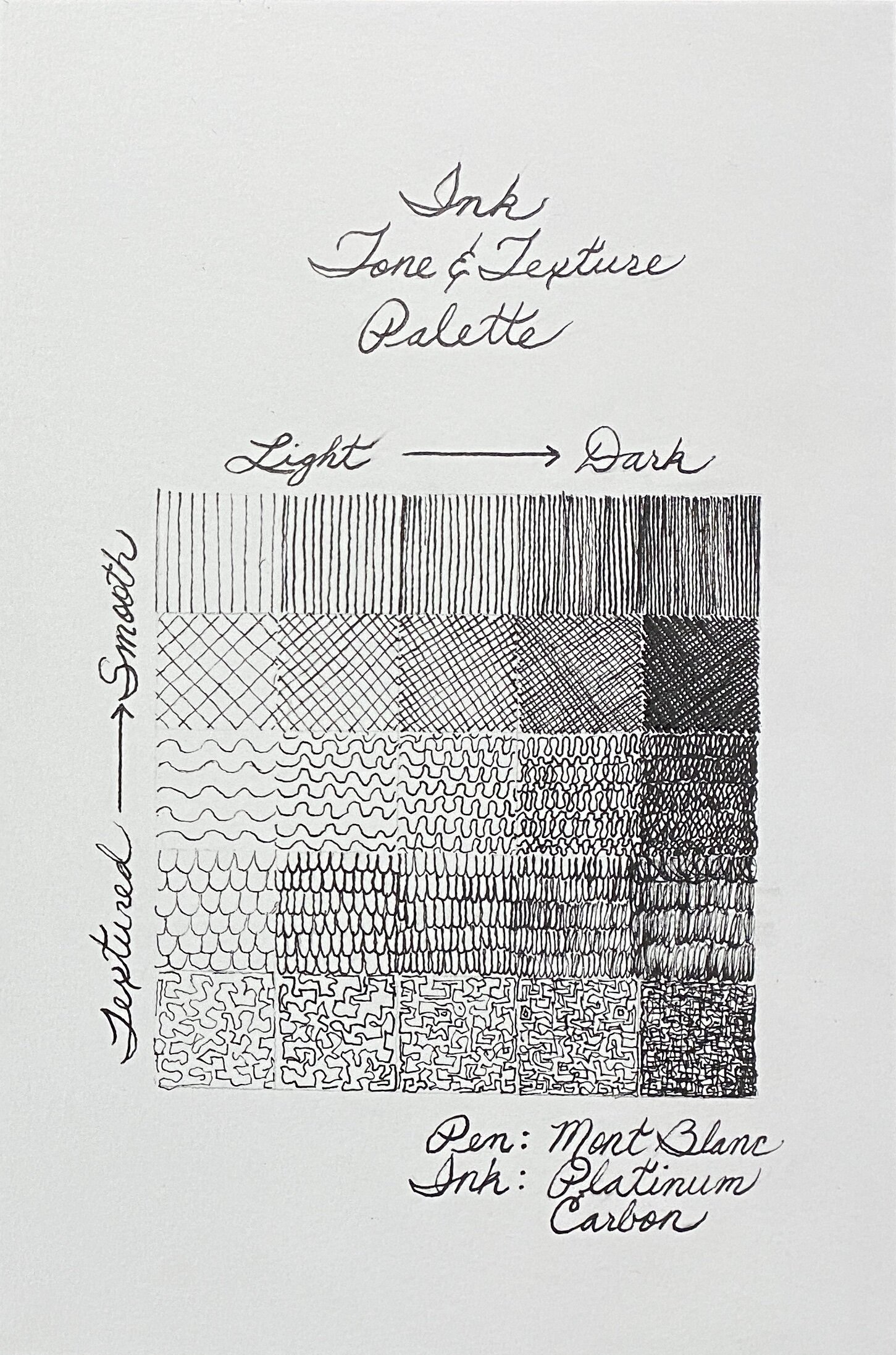
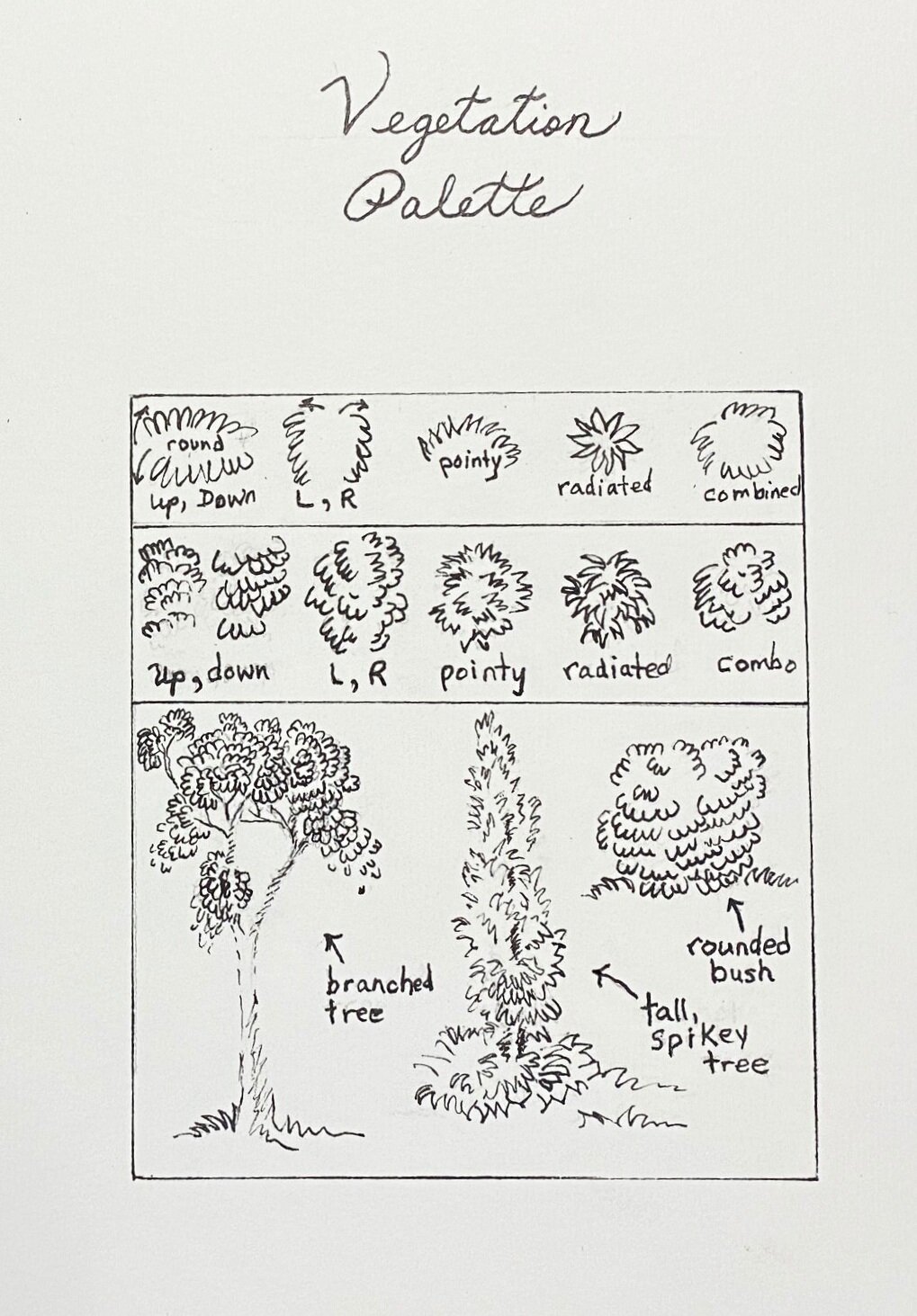
Resources from the Workshop
CHAT transcript — click > HERE <
Click image BELOW to initiate download for the workshop PDF with all the information, sample images, and links. Or, use: https://www.dropbox.com/sh/rvlzr0a9hezdgjr/AACw6pH9jwhj6sQ-rvmM_GGwa?dl=0
Bonus! I did a short video (no sound) of how to clean and refill a fountain pen:
DEMOS FROM THE WORKSHOP

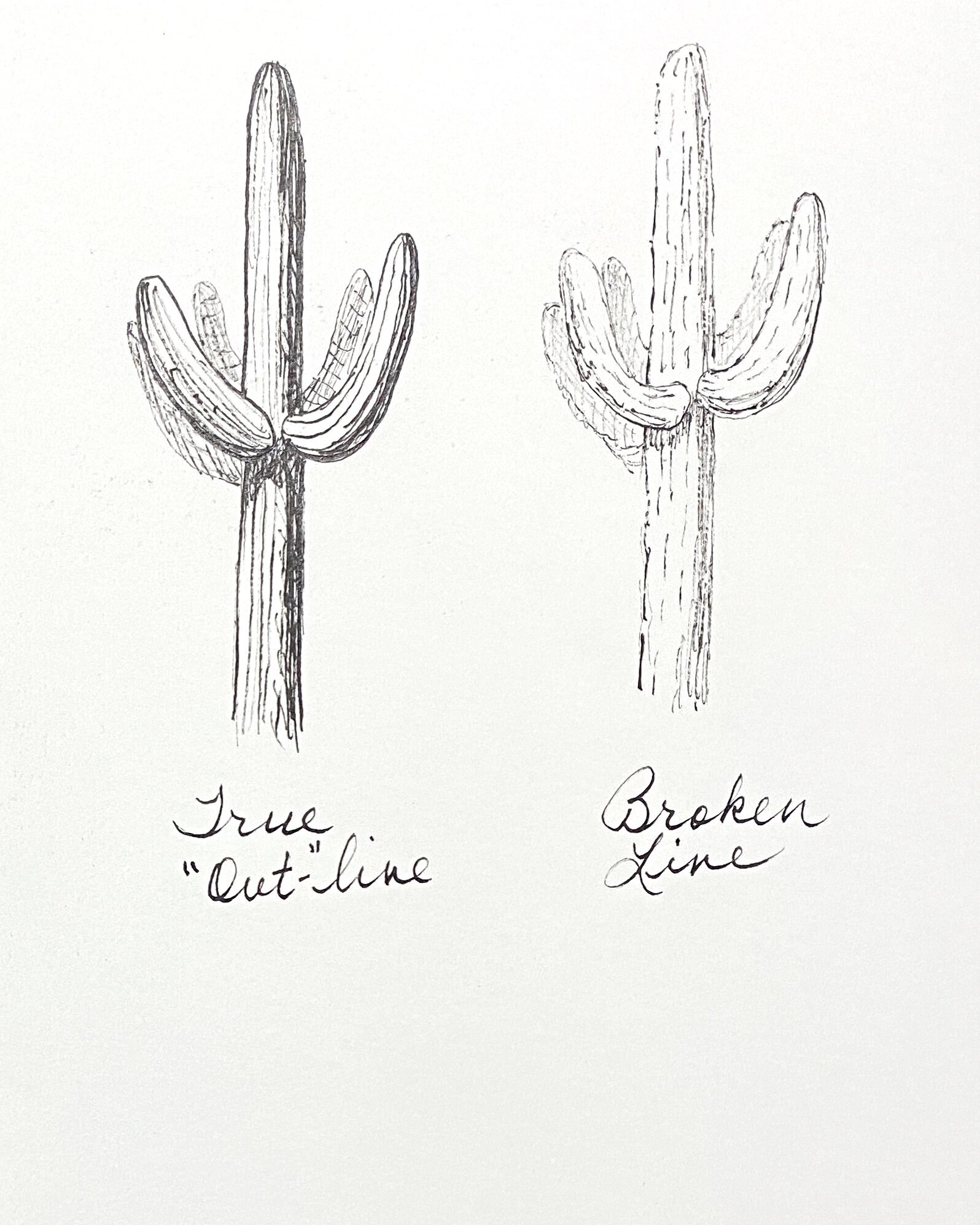
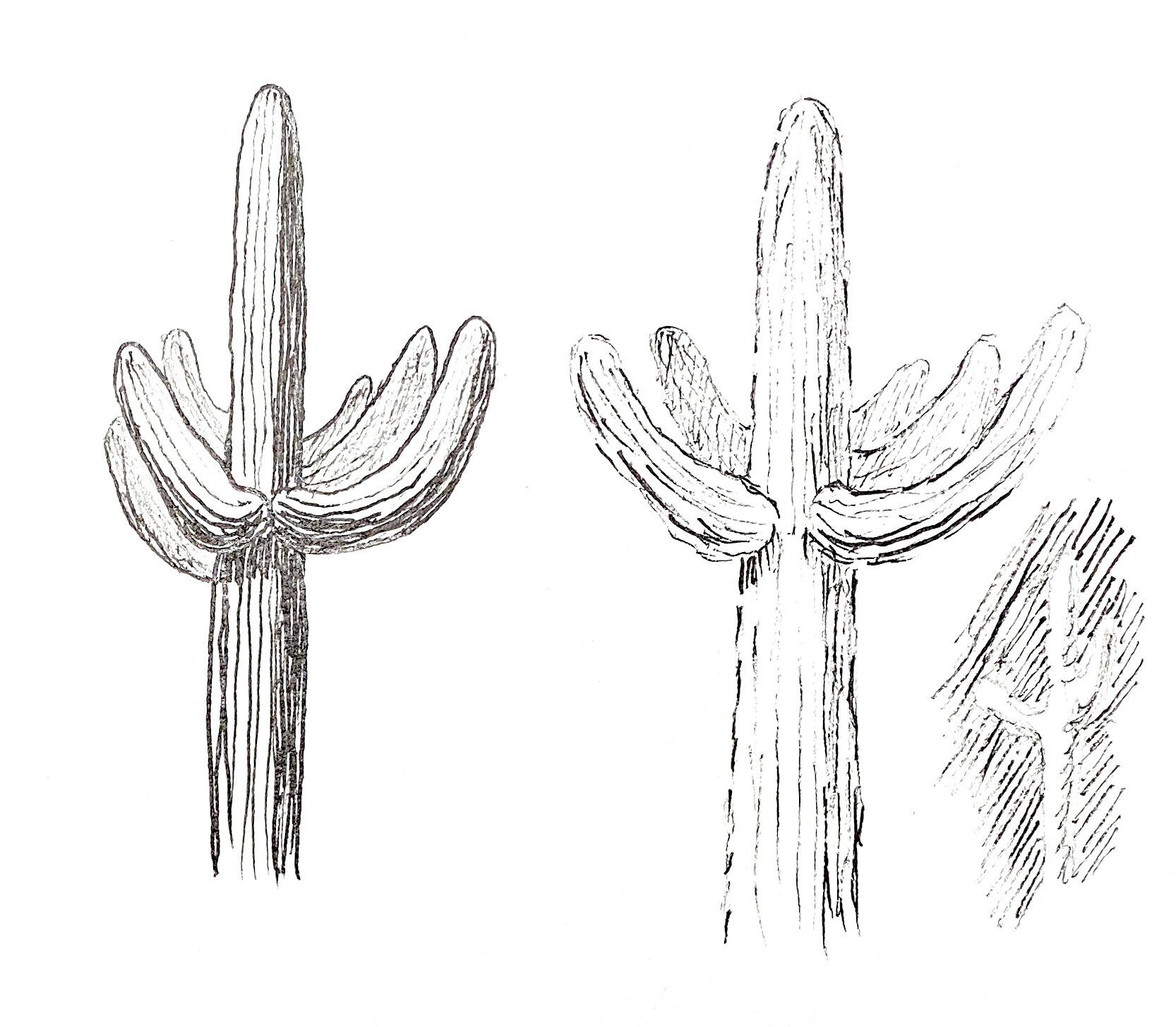
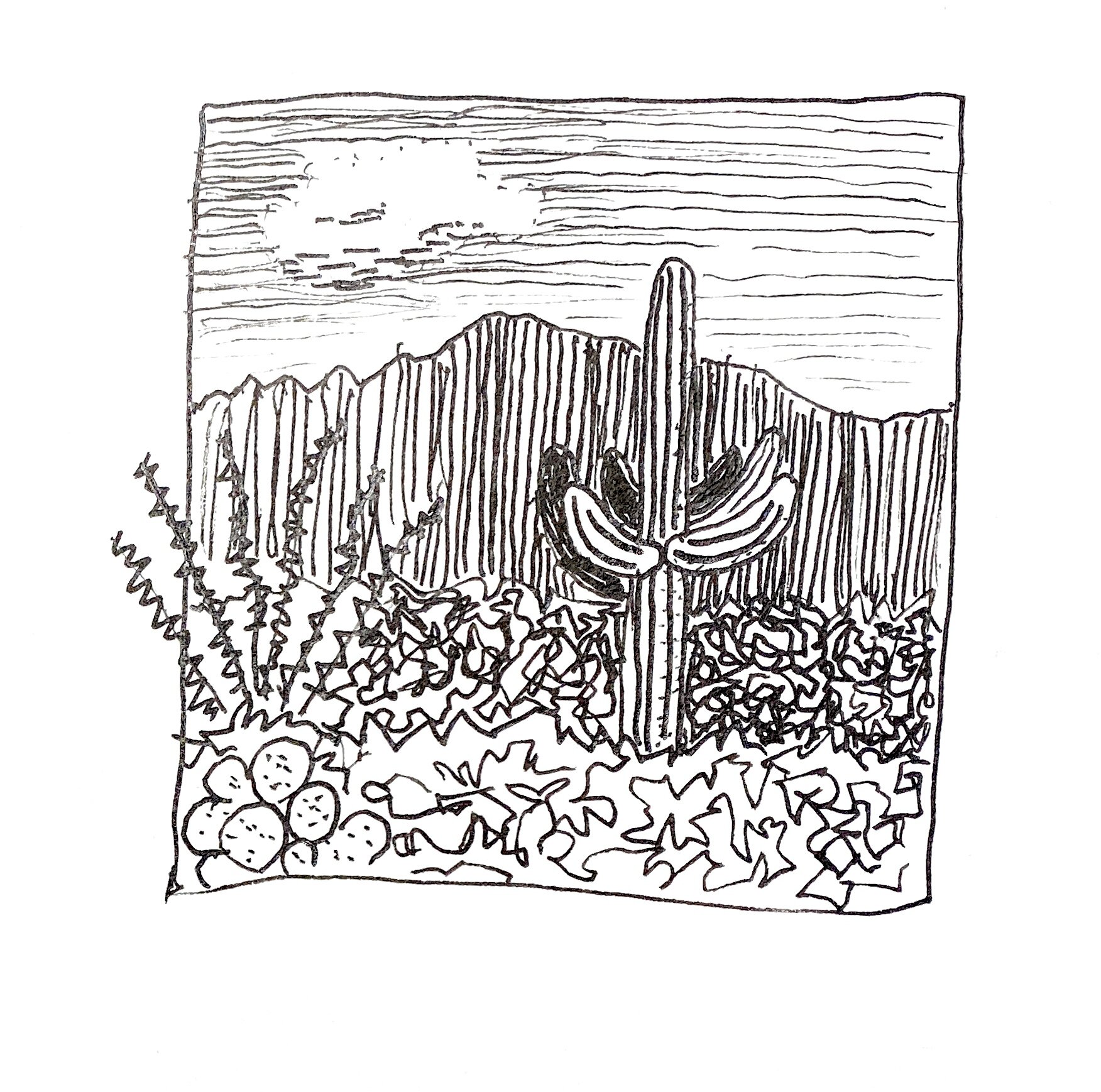

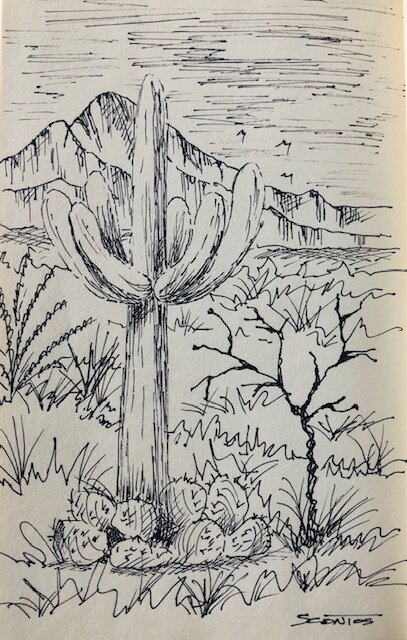
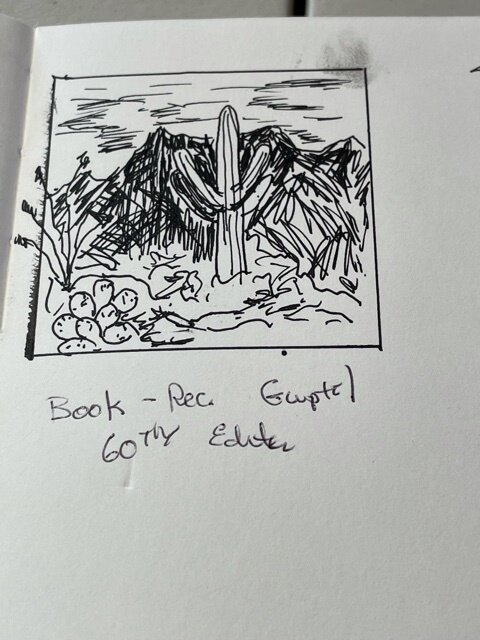
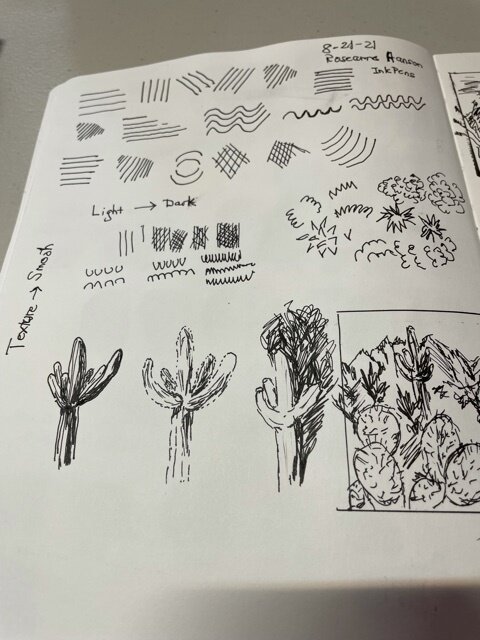
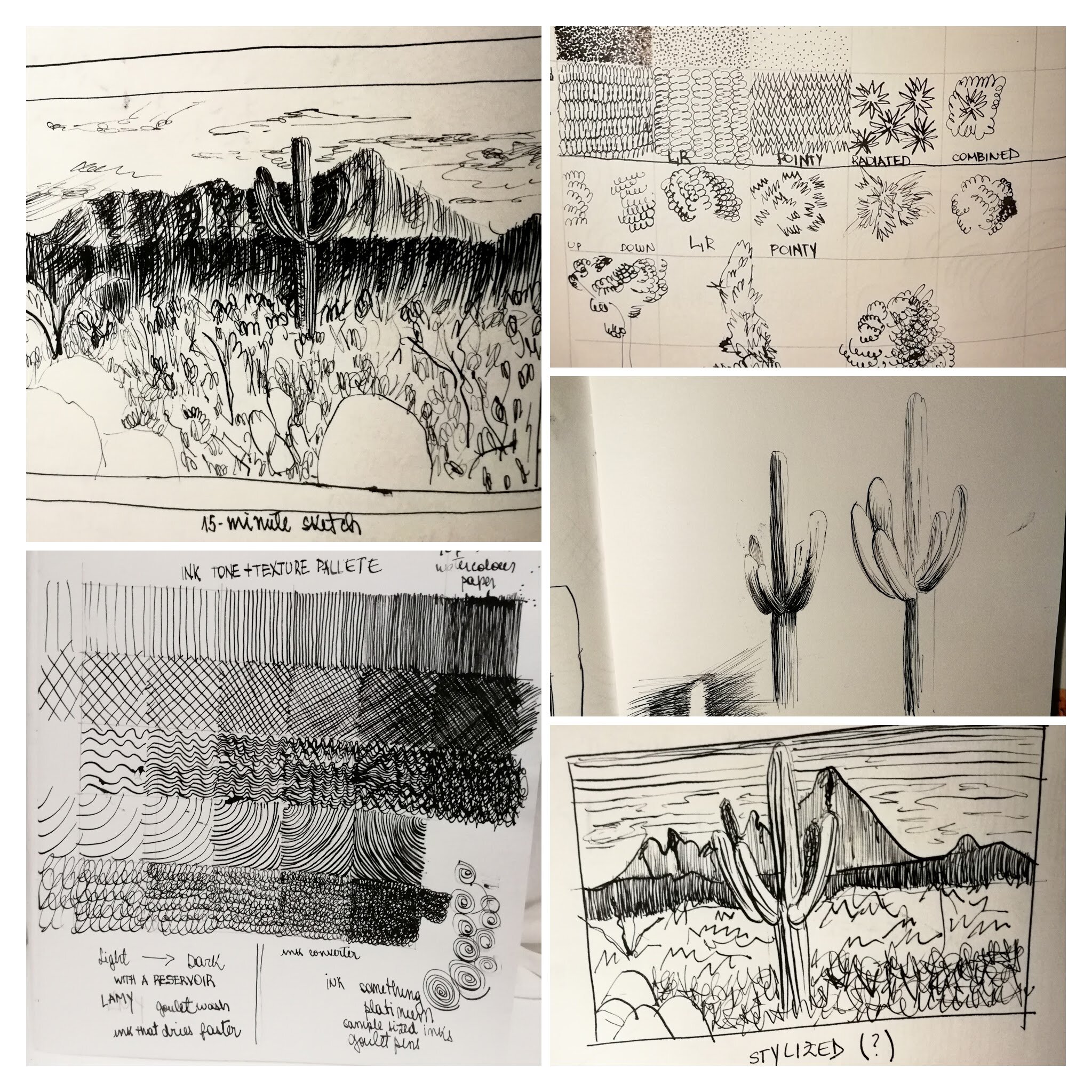
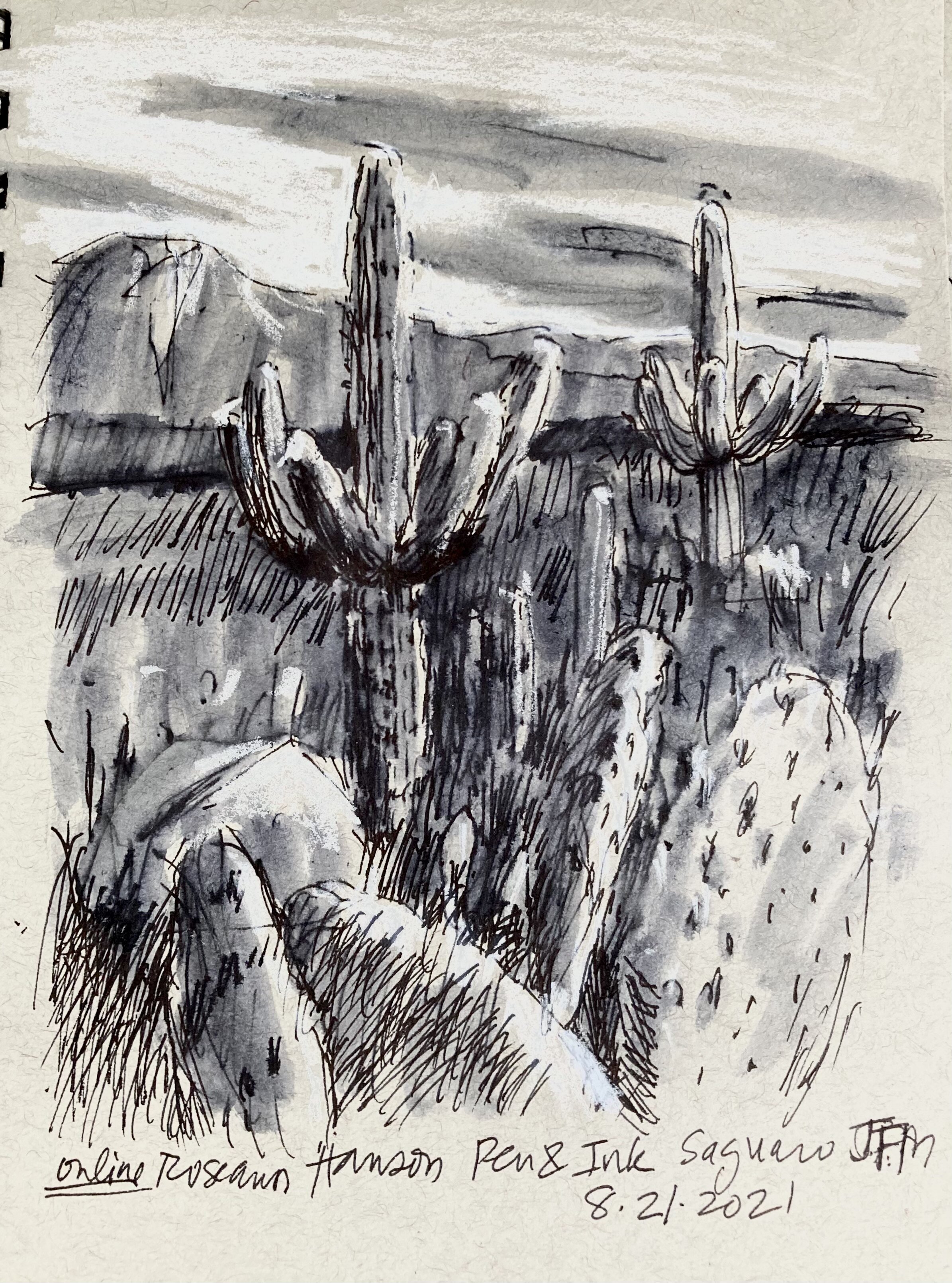
Virtual Field Trip: Winter Wonderlands
Join me on a virtual field trip sketching winter wonderlands around the world! Experiment with different ways to represent snow and ice . . . from the comfort of your warm studio!
We’ll learn about wavelengths and why snow is white and glaciers are blue; explore using blue for shadows in show; practice winter “colorways;” how to represent animal tracks; and sketch some icicles.
Sketch along or just observe, I’ll narrate as I go to demonstrate why I choose to focus on what subjects and how to quickly capture them in your field notebooks and nature journals.
If you’re shy, don’t worry—we don’t require anyone to share their work and you can remain completely anonymous and worry-free!
Length: 2 hours
Resources from the Workshop
WHAT COLORS?
French Ultramarine Blue - granulating, makes lovely grays by mixing with Burnt Sienna. Also makes beautiful snow-shadow and sky colors.
In my mini triad palette Daniel Smith (CMY = cyan, magenta, yellow) plus two extras —
Manganese Blue Hue
Quinacridone Rose
Aureolin Yellow (Cobalt Yellow PY40)
Burnt Sienna
Indanthrone Blue
Other useful colors:
Readymade grays - Payne’s Gray or Jane’s Gray (which is French Ultramarine and Burnt Sienna already mixed).
Fun - Shadow Violet and Moonglow, are more purpley grays.
PRACTICING WINTER COLORWAYS WEBLINKS
Study in Blue, by Scott Kranz Photography:
https://www.scott-kranz.com/landscape-portfolio
Lake Solitude, Grand Tetons, Wyoming:
Kenai Fjords, Alaska:
CANELO HILLS VIRTUAL FIELD TRIP IN 360-DEGREE VIEW:
https://360exploring.s3-us-west-1.amazonaws.com/WinterWonderland/output/index.html
METADATA AND NATURE DATA for CANELO HILLS, SOUTHEASTERN ARIZONA, USA:
31.557 degrees N
110.55 degrees W
5,182 feet
Sunrise 7:12AM / Sunset 6:02PM
Moonrise 2:42AM / Moonset 1:12PM
High 65 / Low 37
Clouds: Altocumulus “mackerel” sky
Original pages by Roseann, completed onsite during the real field trip in January.
Virtual Field Trip Pages by Roseann
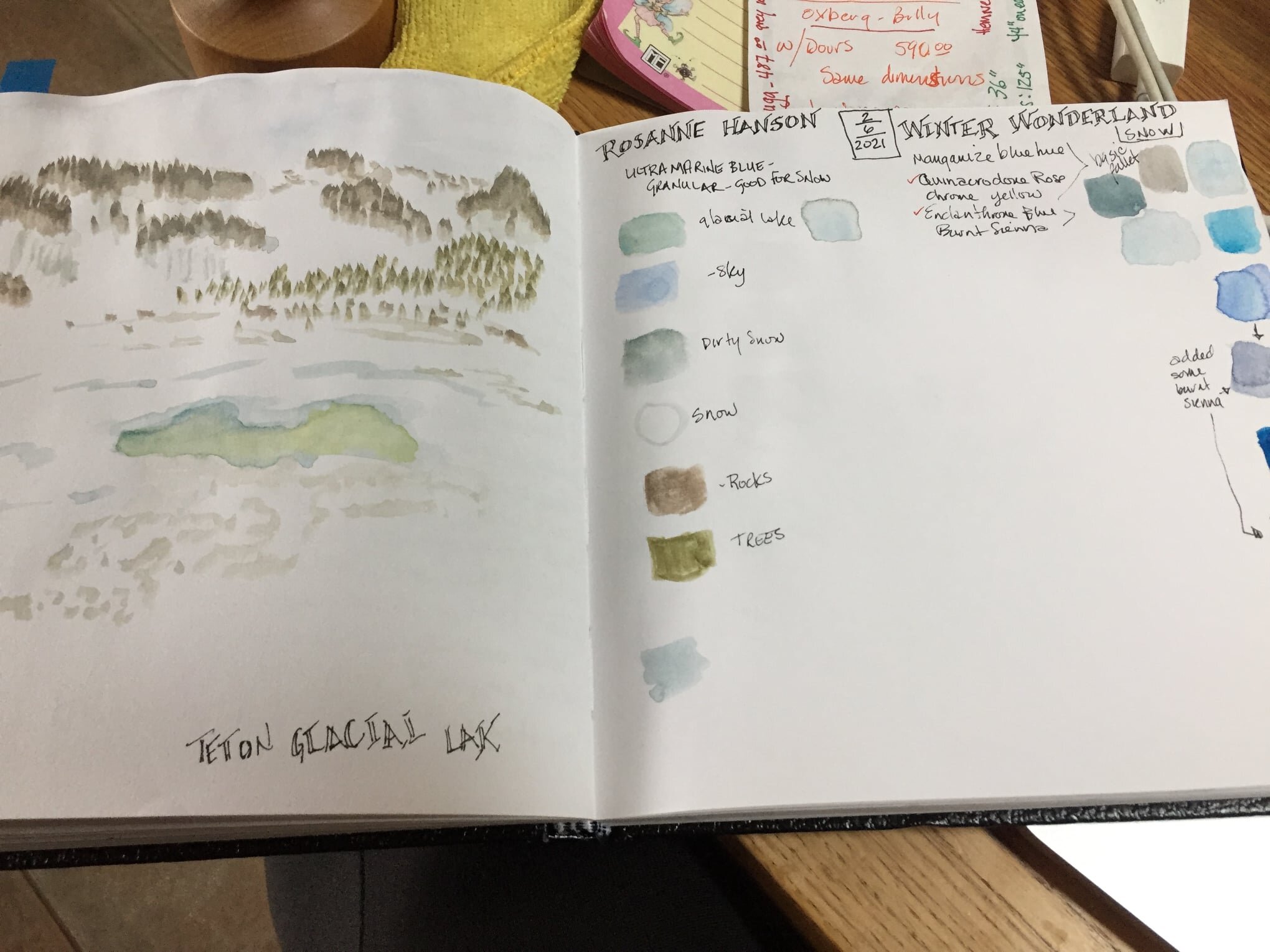
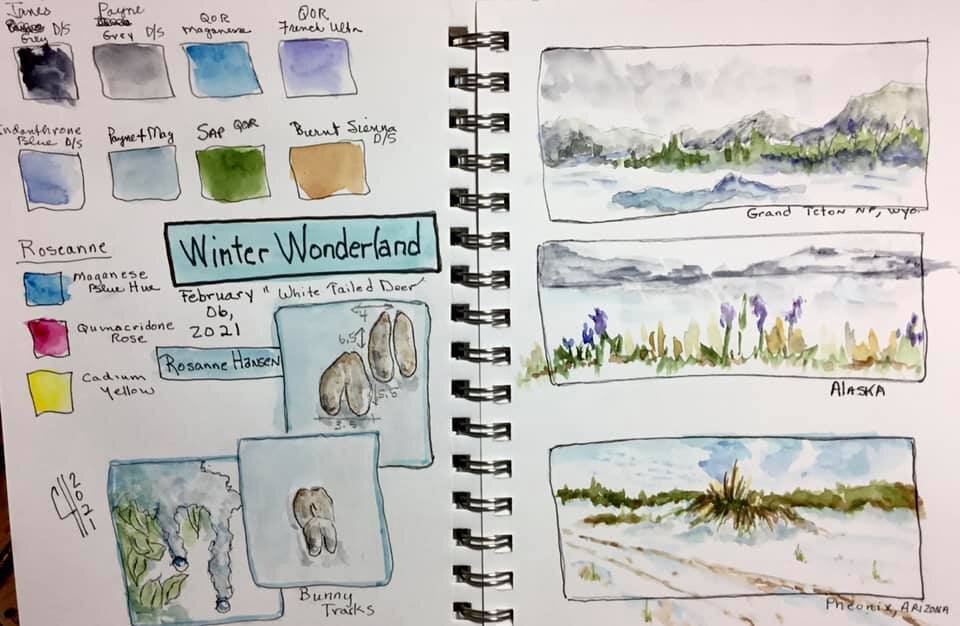
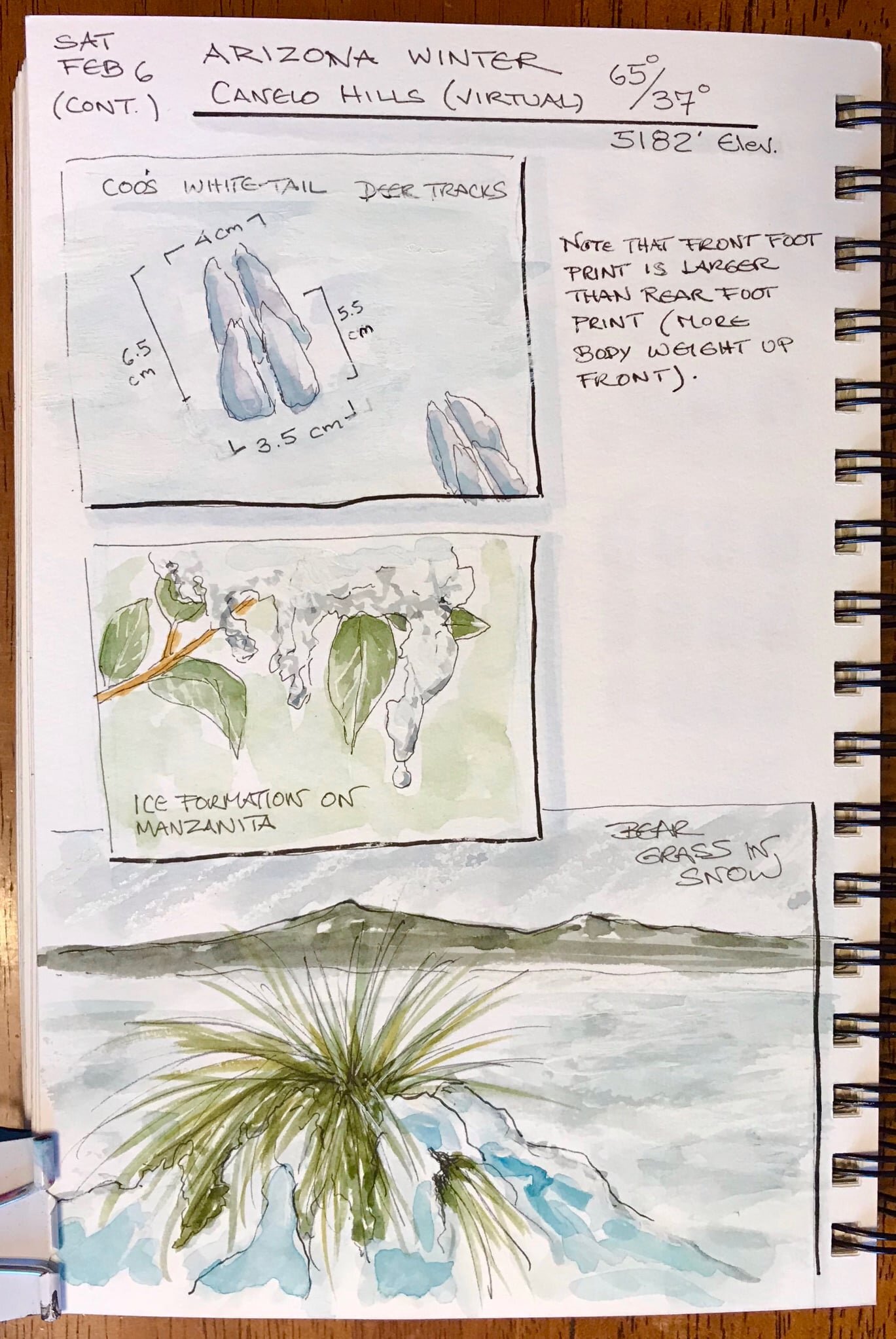
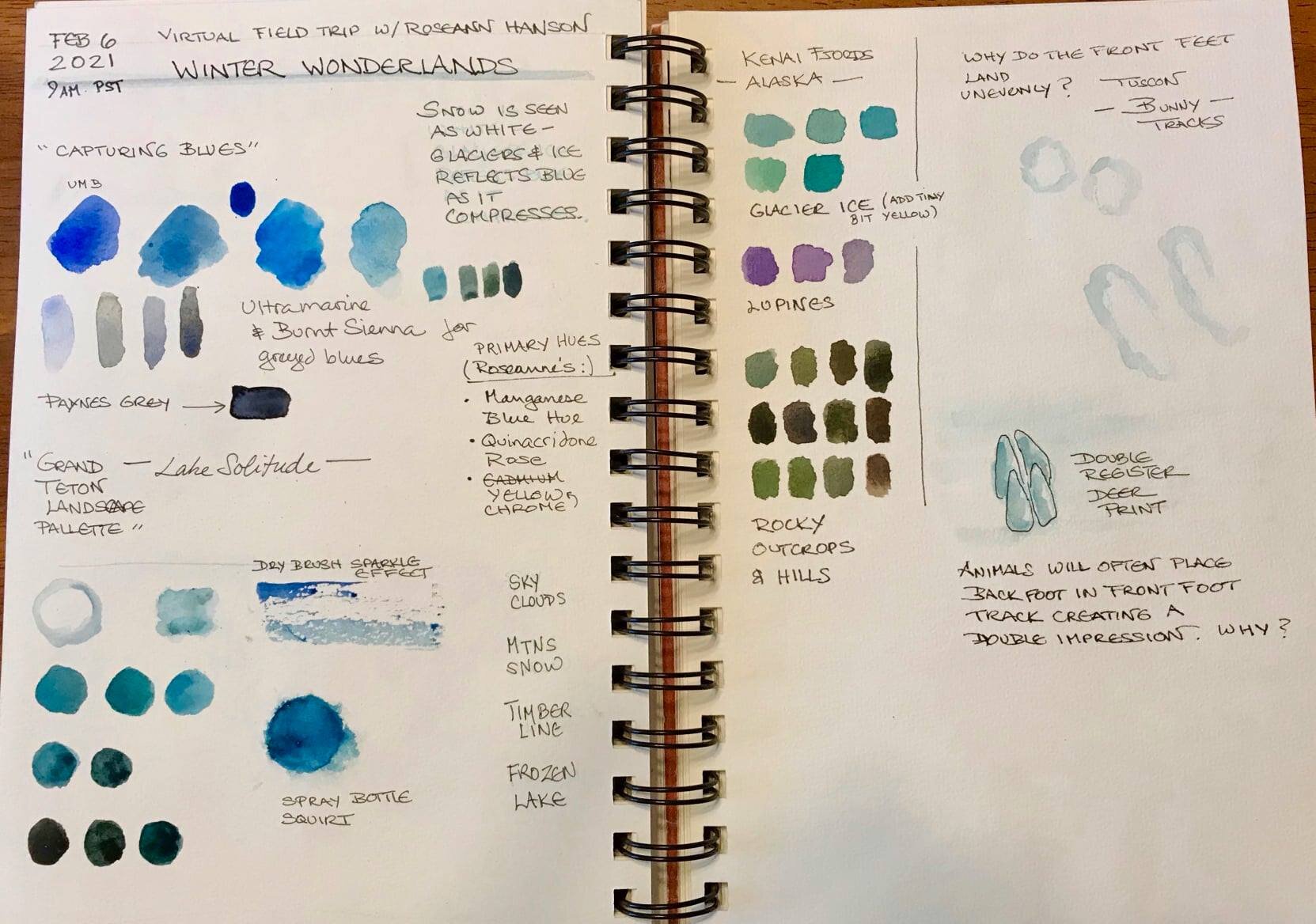
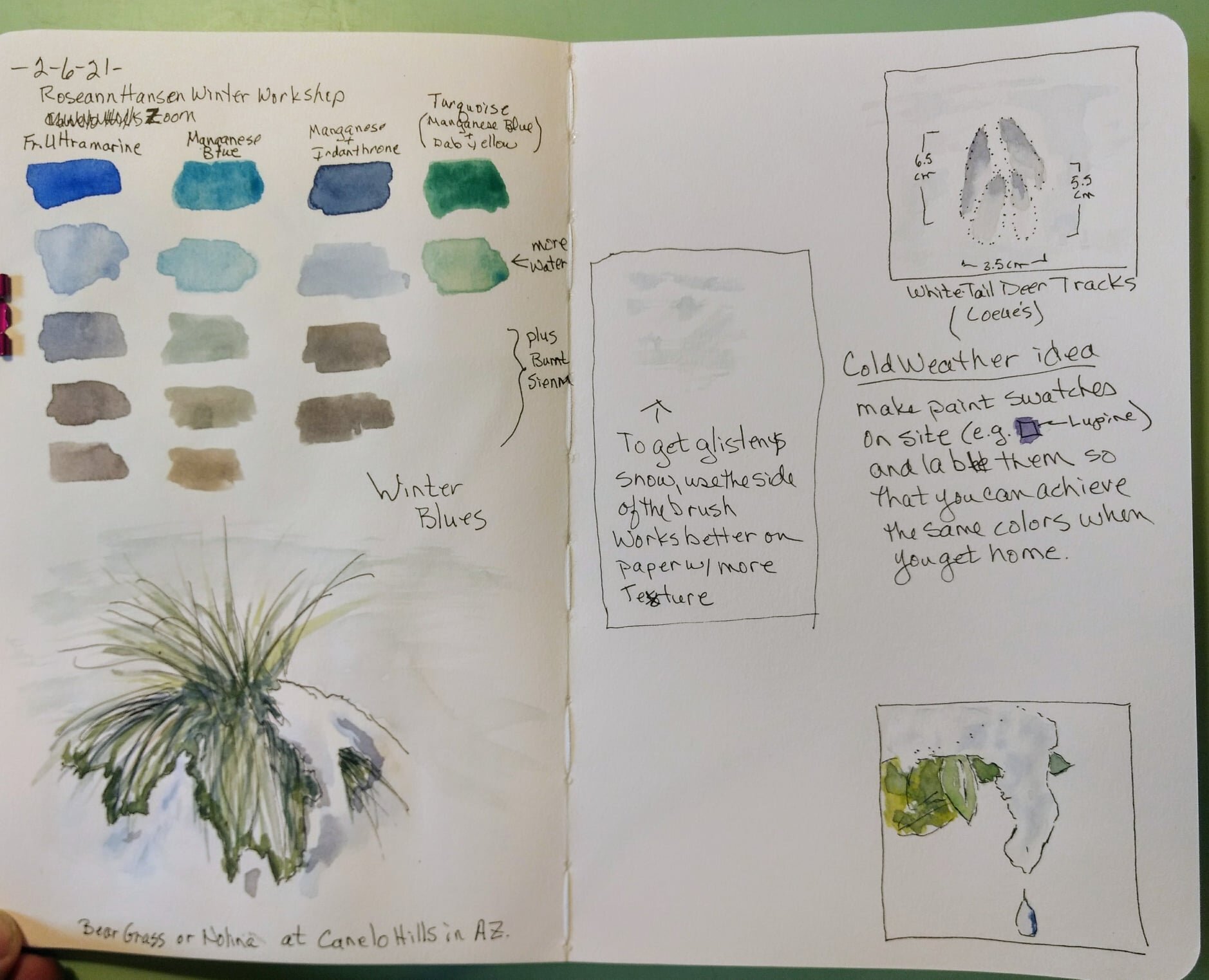
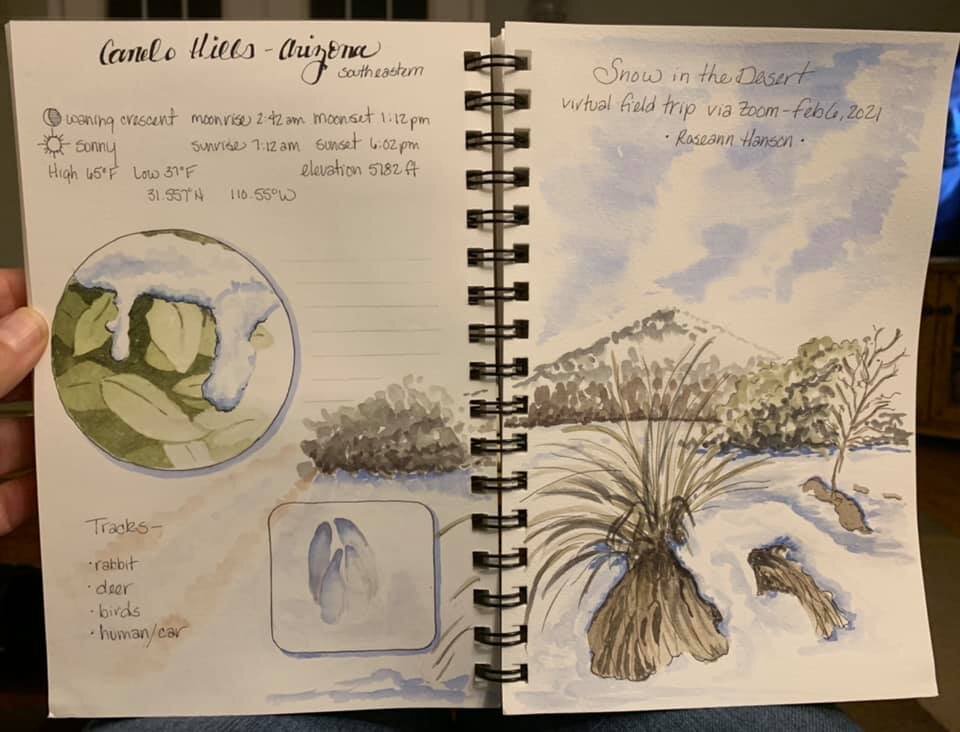
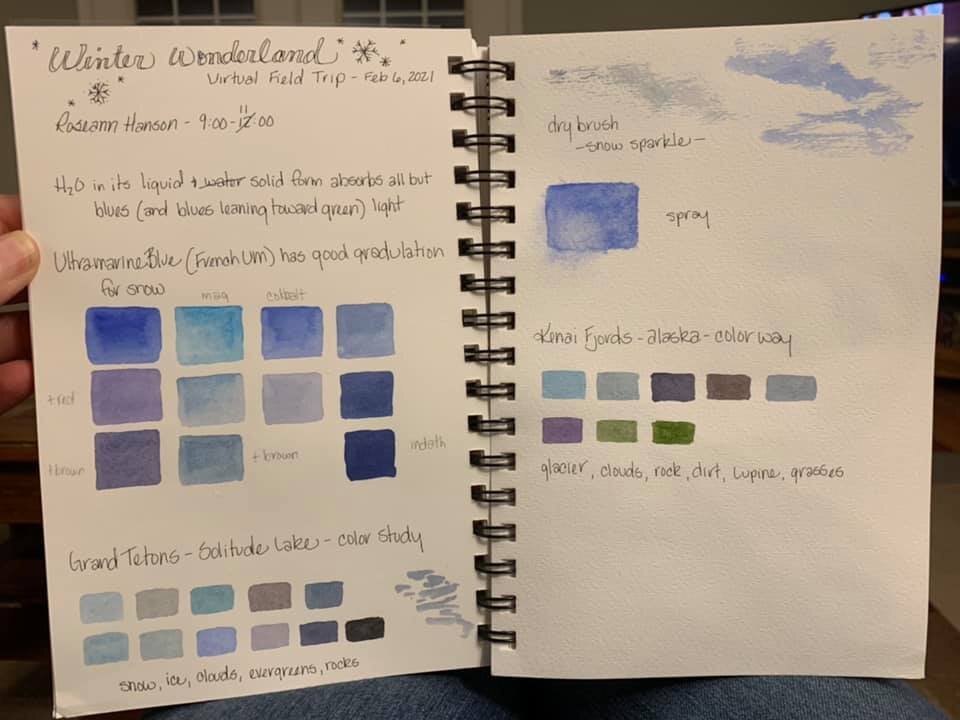
Support free tutorials! Click to contribute to the Tip Jar!
Using Grids: 3D cube landscapes and more
Join me for a free online workshop on how to draw “3-D” landscape cubes — in which you envision taking a giant cutter and pulling a cube out of a landscape, showing the sliced edges and details such as soil and creeks and roots (see here and here for examples). John Muir Laws details them in his wonderful book The Laws Guide to Nature Drawing and Journaling.
These are not easy to do— I struggled with these complex drawings “live” in the field. Where to place the cube, how to envision placing the elements correctly. I always drew mine from photos, then actually printed them and sketched the cube over the photo, or used Photoshop to put a cube over the digital photo.
But with a fun new tool ( the new clear Perspex Palette-Easel ) I will show you how to easily capture a very fun view of a landscape. Make your own (I’ll include instructions), or order one from my shop ($13 with a dry-erase marker or $12 without).
Length: 2 hours
Resources from the Workshop
IMAGE FOR PRACTICE DRAWING GRID LANDSCAPITO
IMAGE FOR PRACTICE-DRAWING CUBE LANDSCAPE
METADATA AND NATURE DATA for ROMERO POOLS, SANTA CATALINA MOUNTAINS, TUCSON, ARIZONA, USA:
32.414359 N, -110.872213 W
3713 feet elevation
Sunrise 0722 am
Sunset 0529 pm
Moonrise 0136 pm
Moonset 0258 am
Moonphase 75% illumination / waxing
High / Low temperatures - High 63/ Low 45 (degrees F)

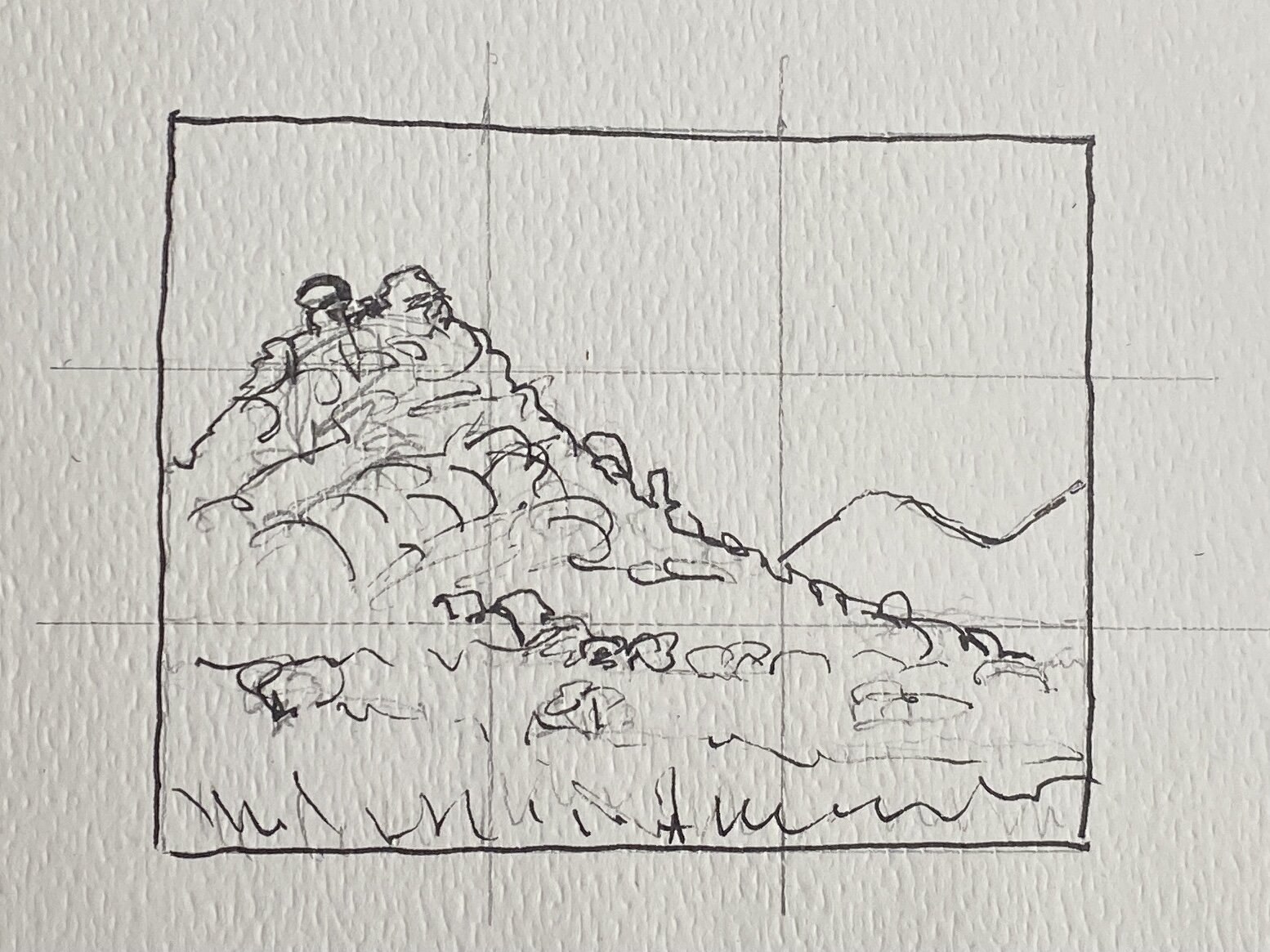
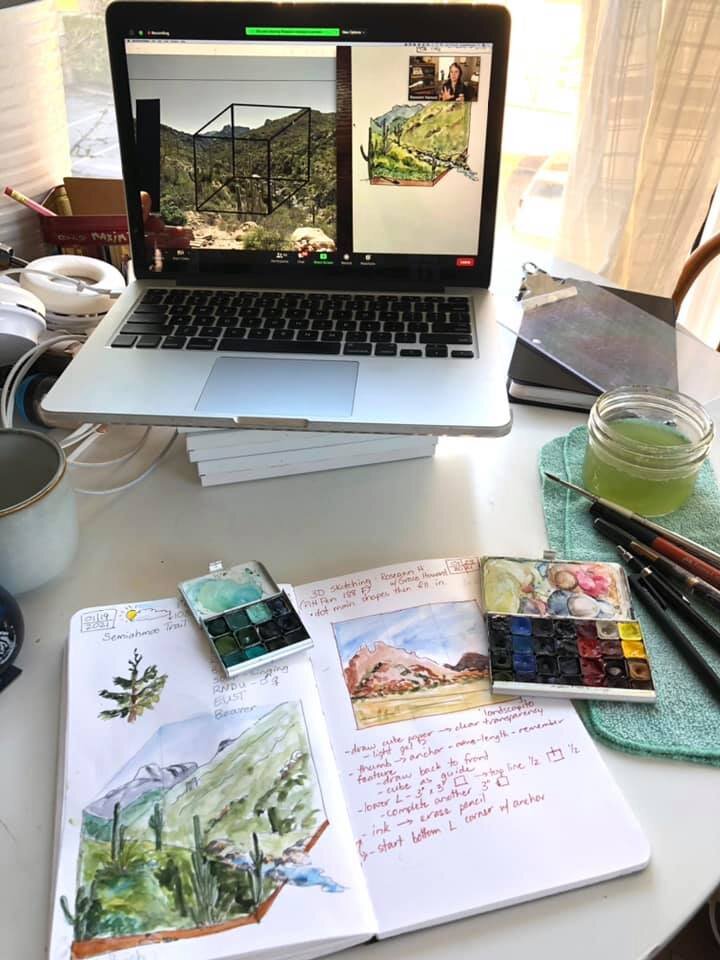
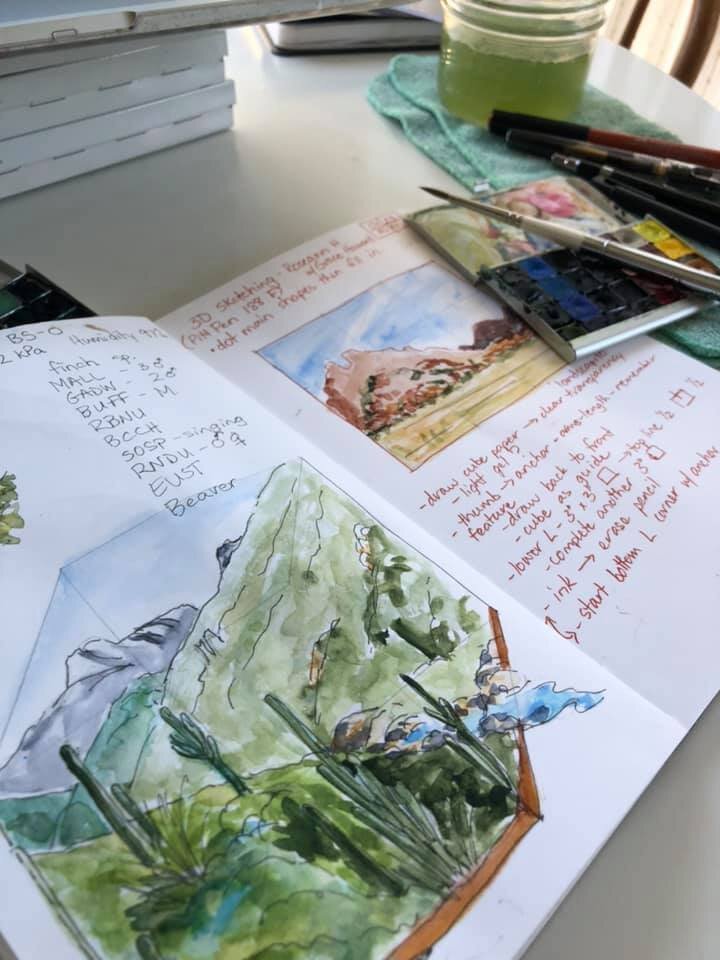
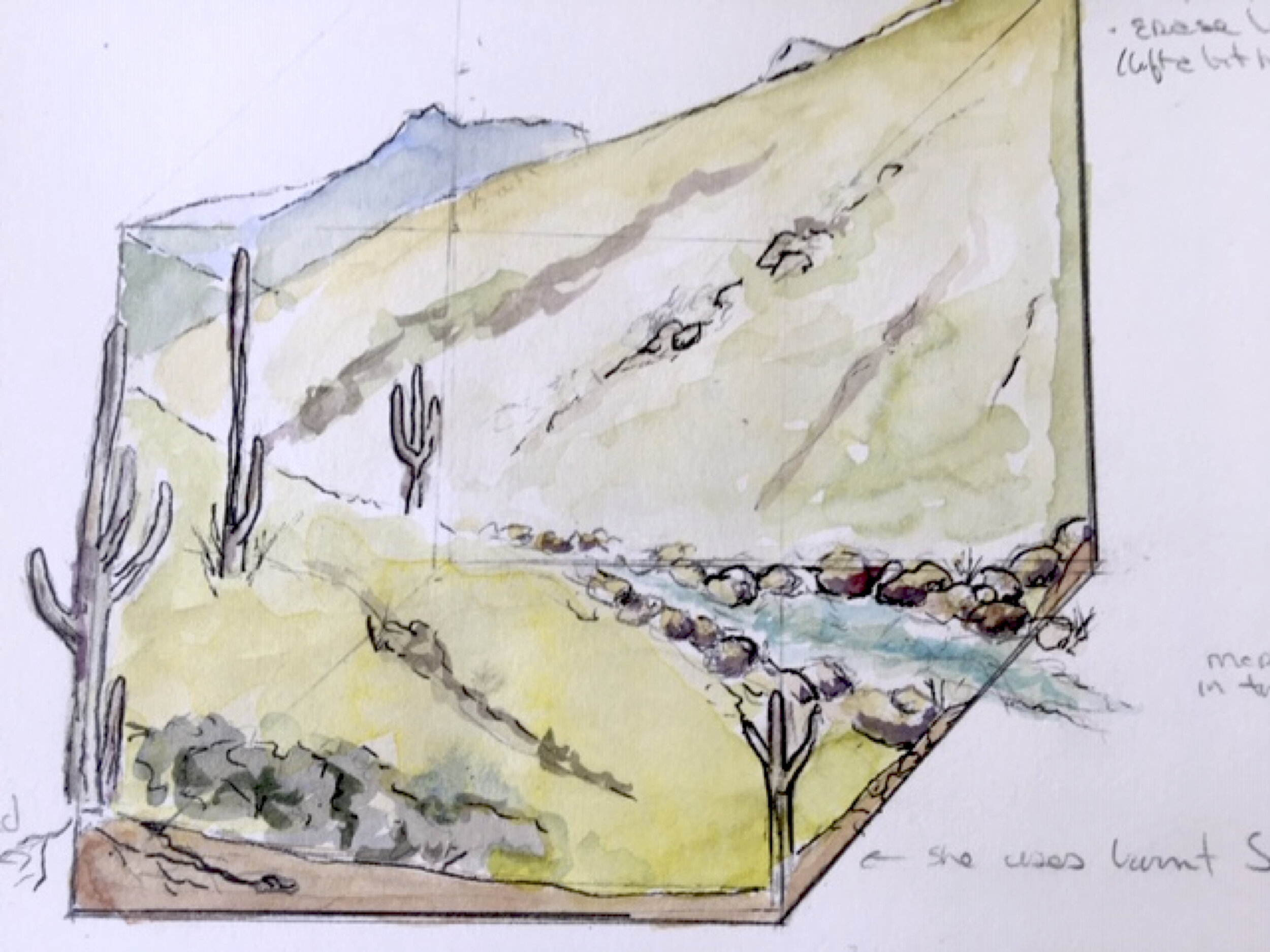
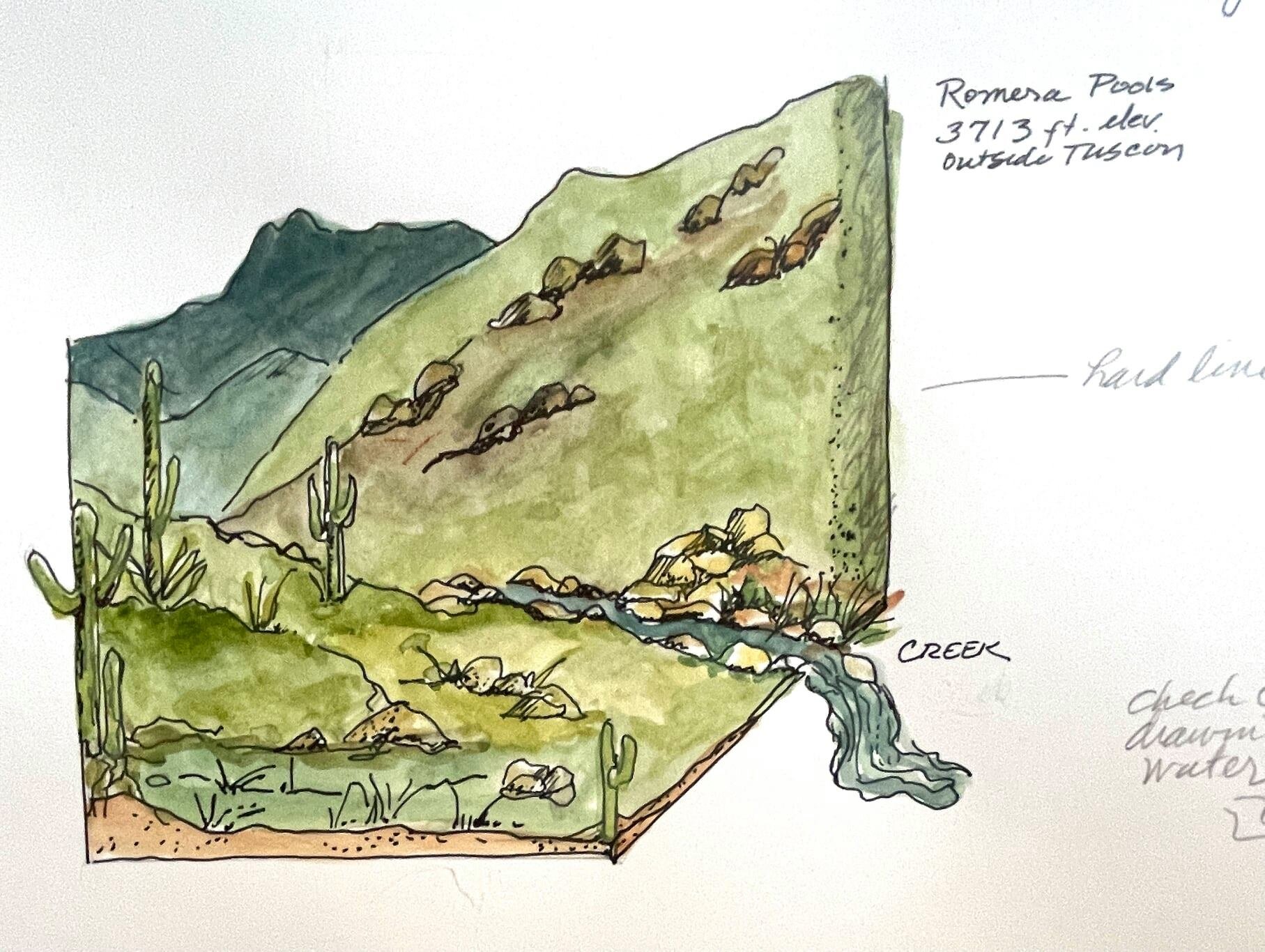


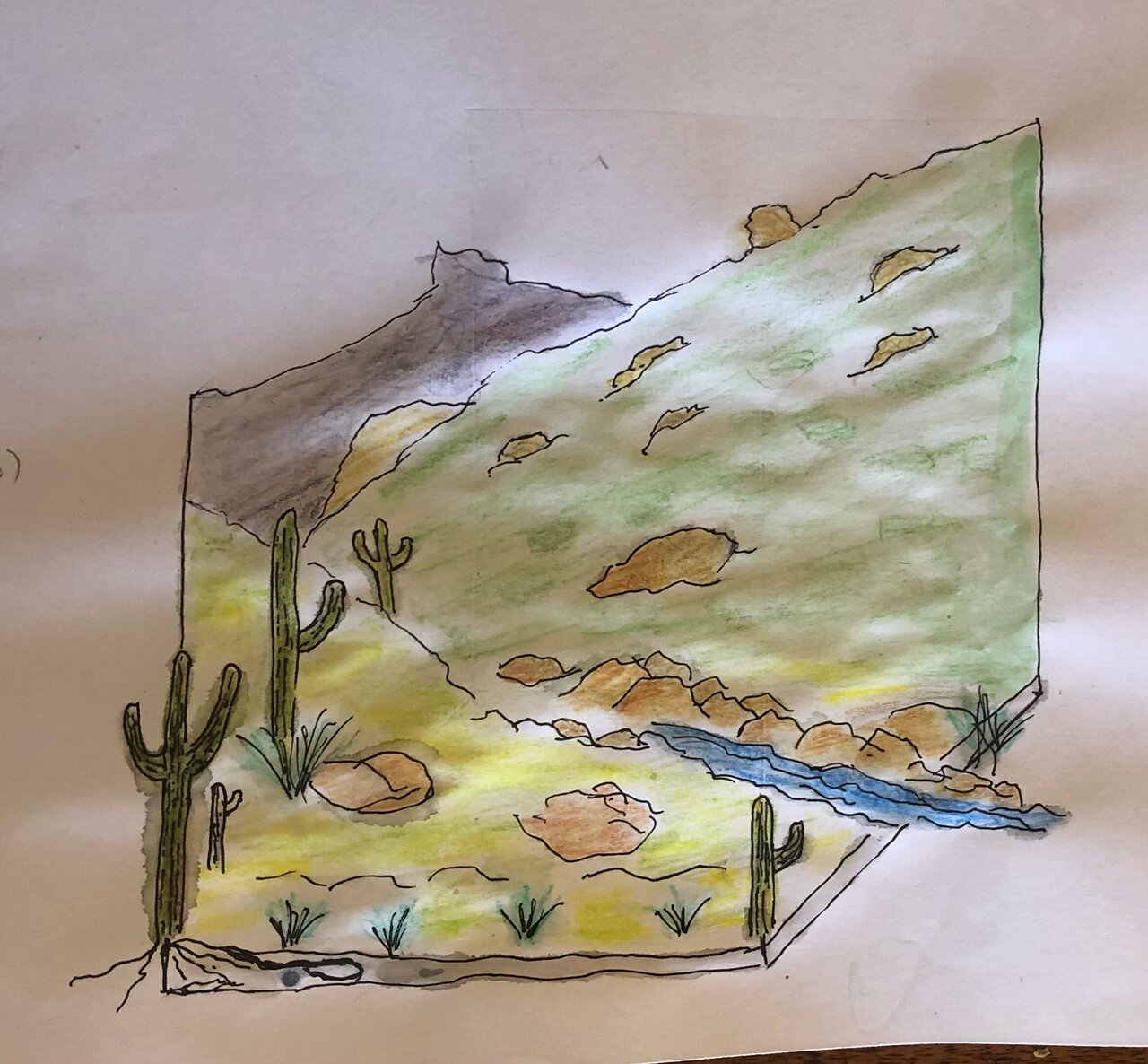
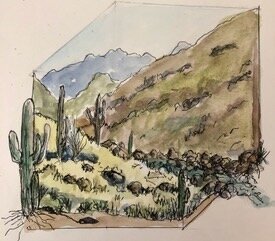
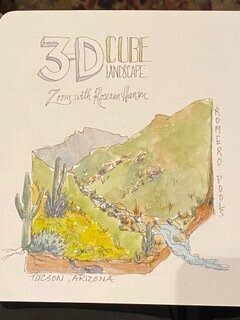
Support free tutorials! Click to contribute to the Tip Jar!

